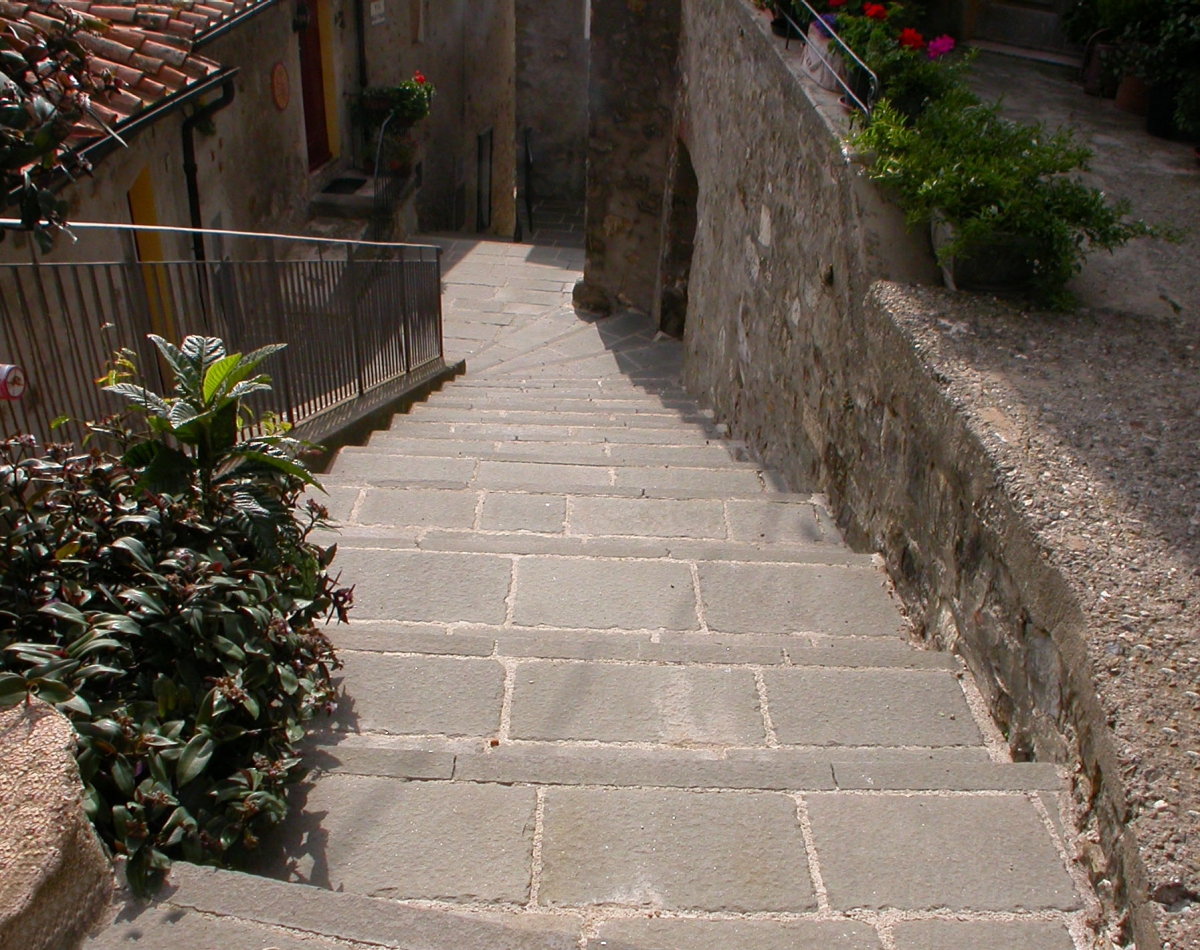
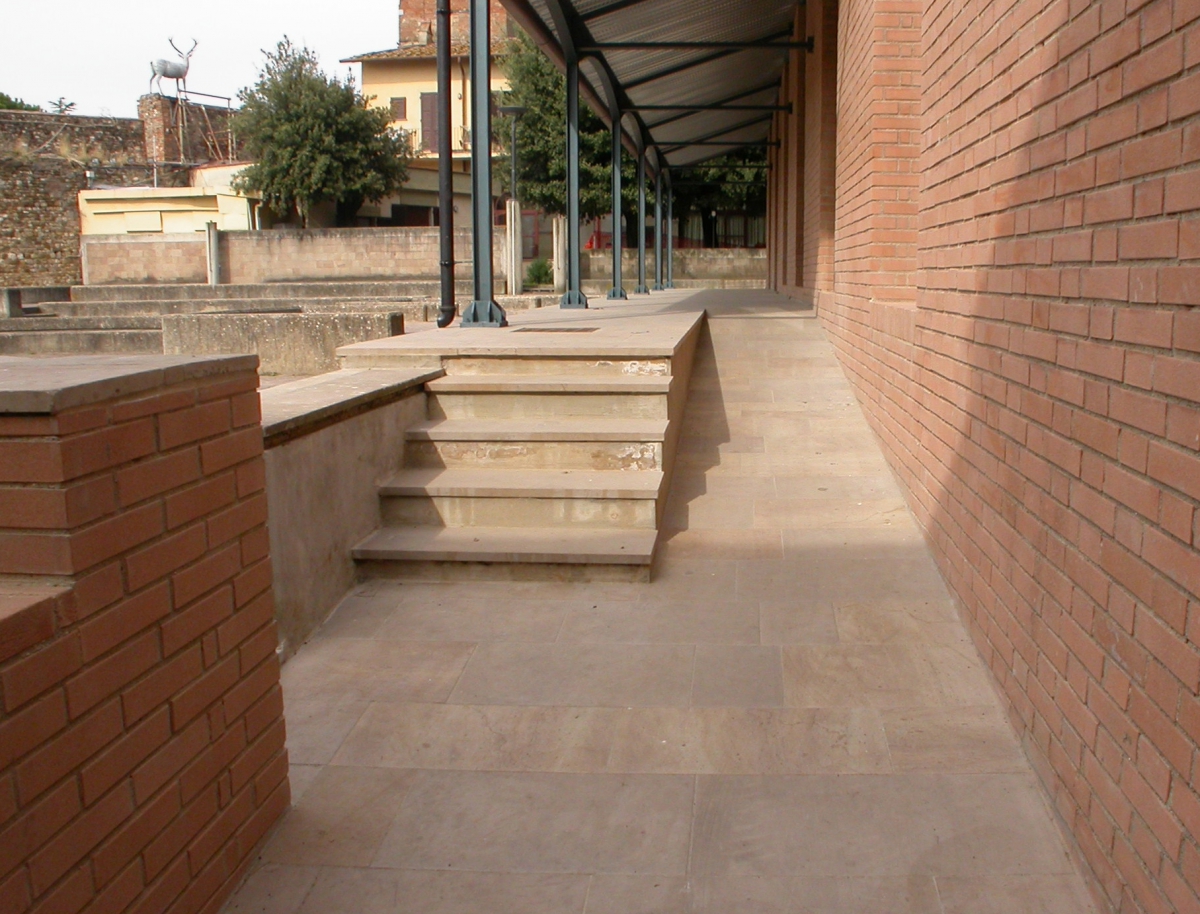
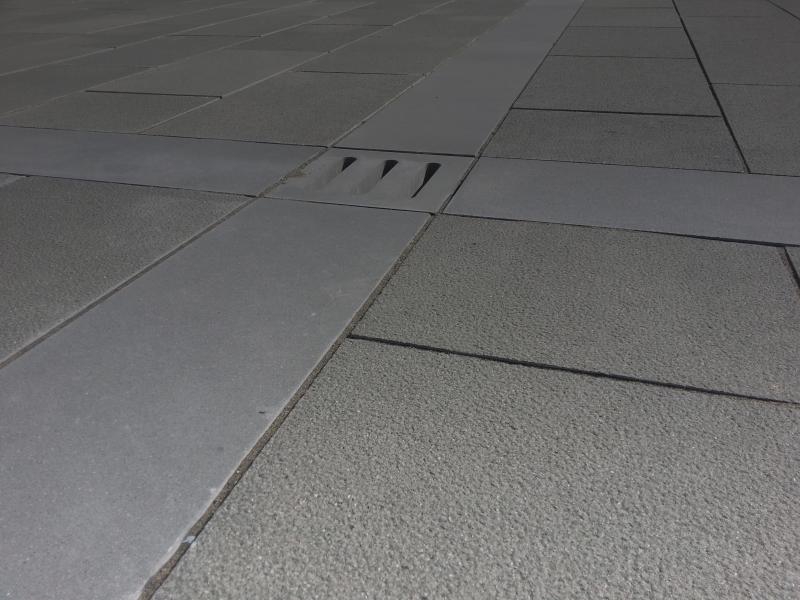
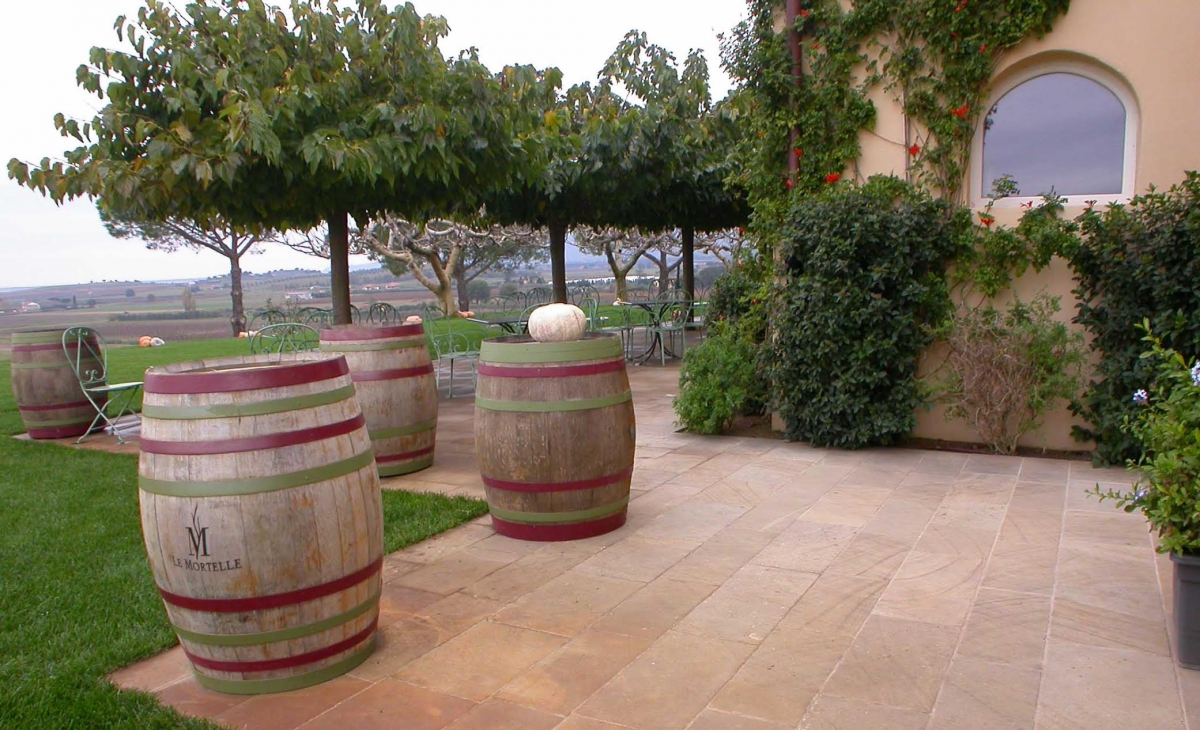
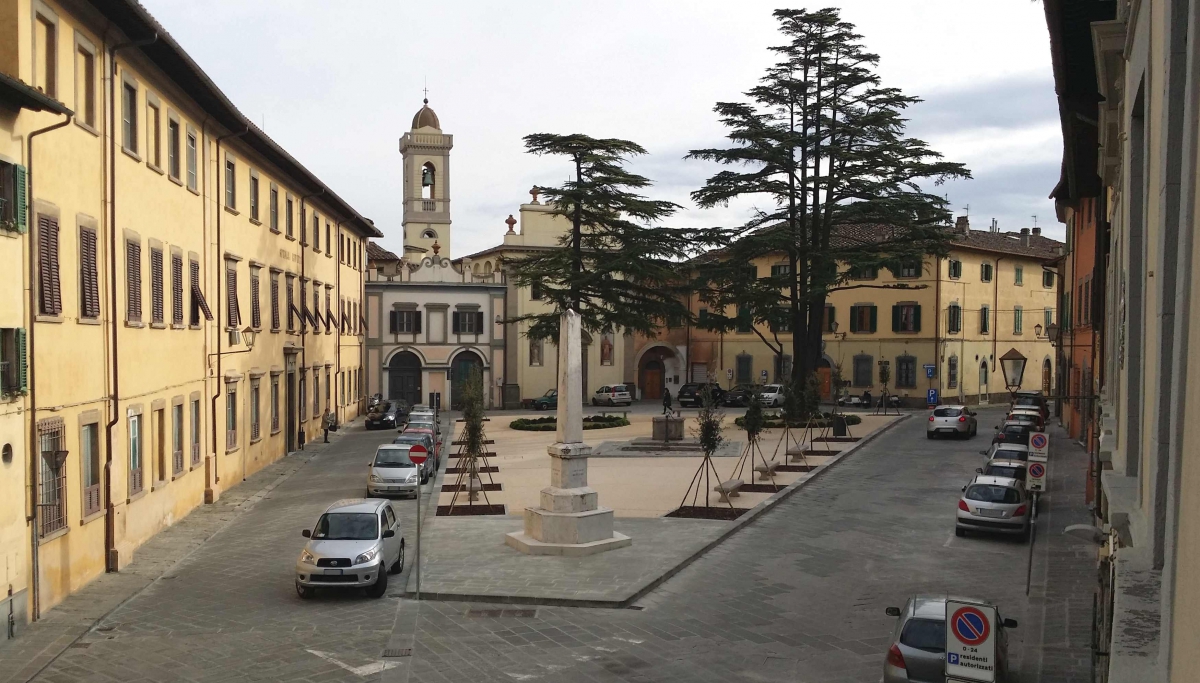
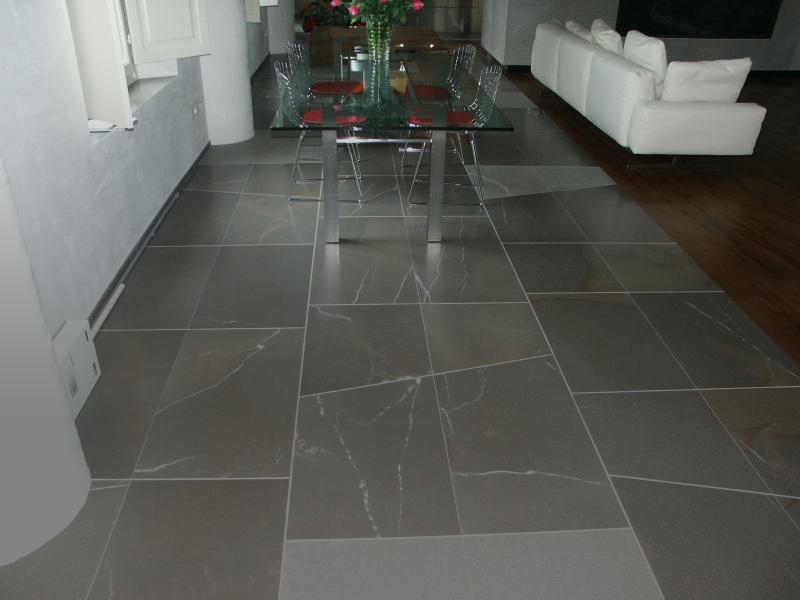
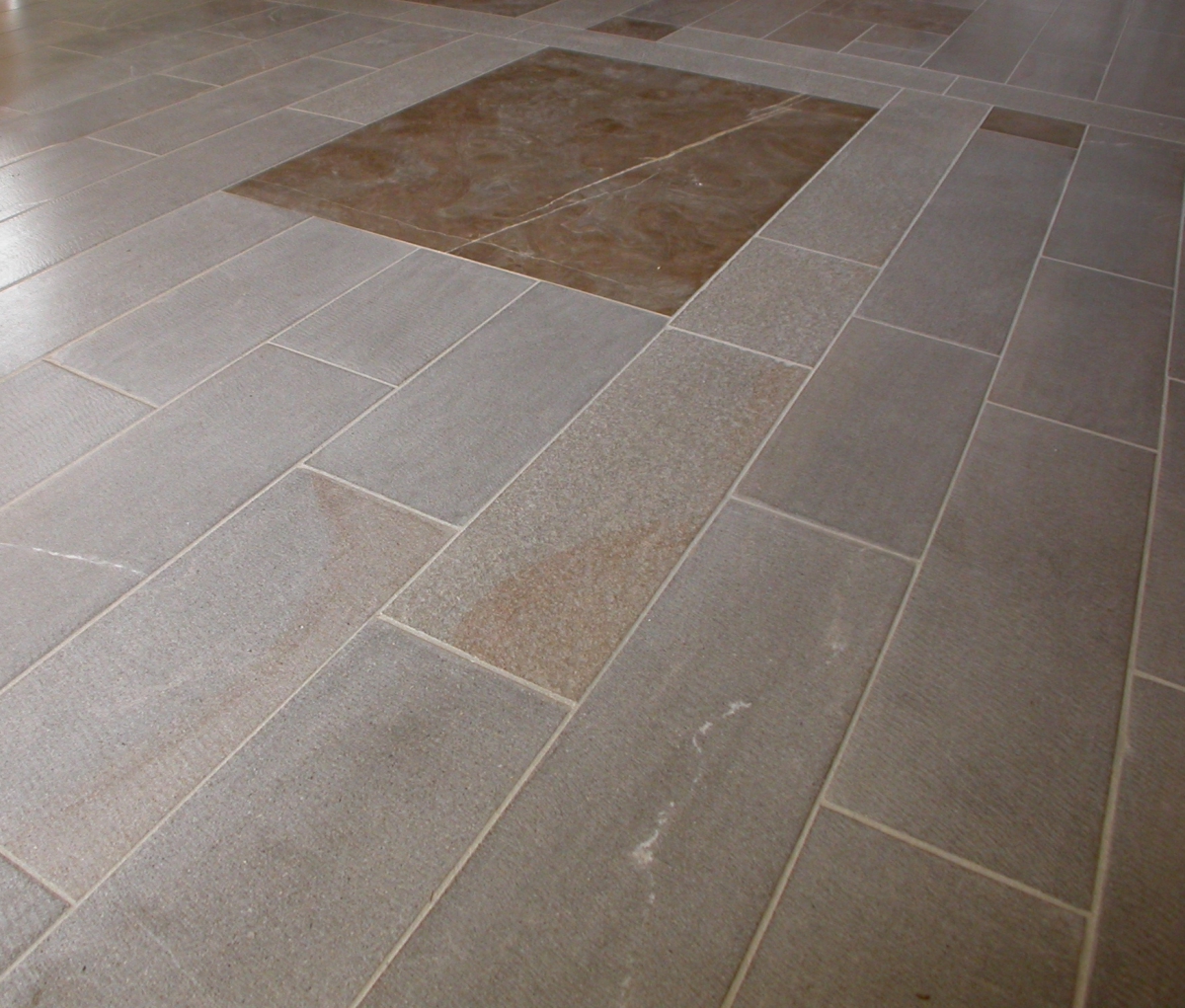
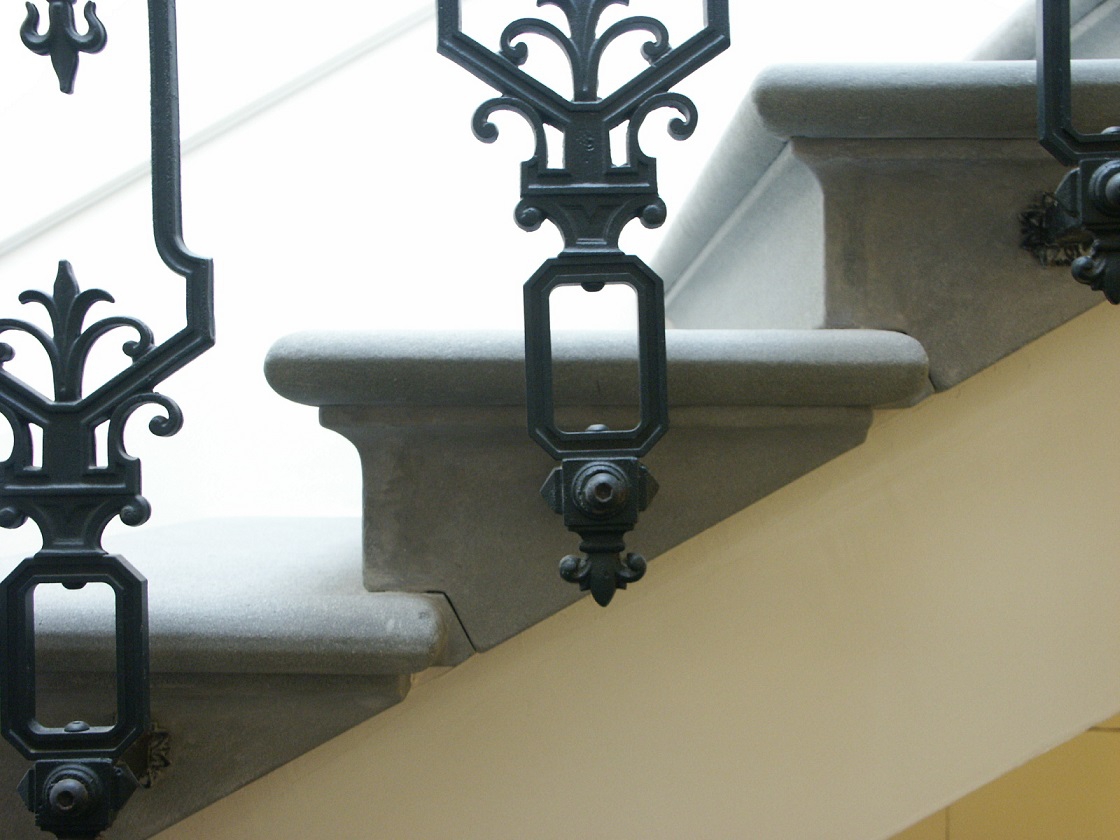
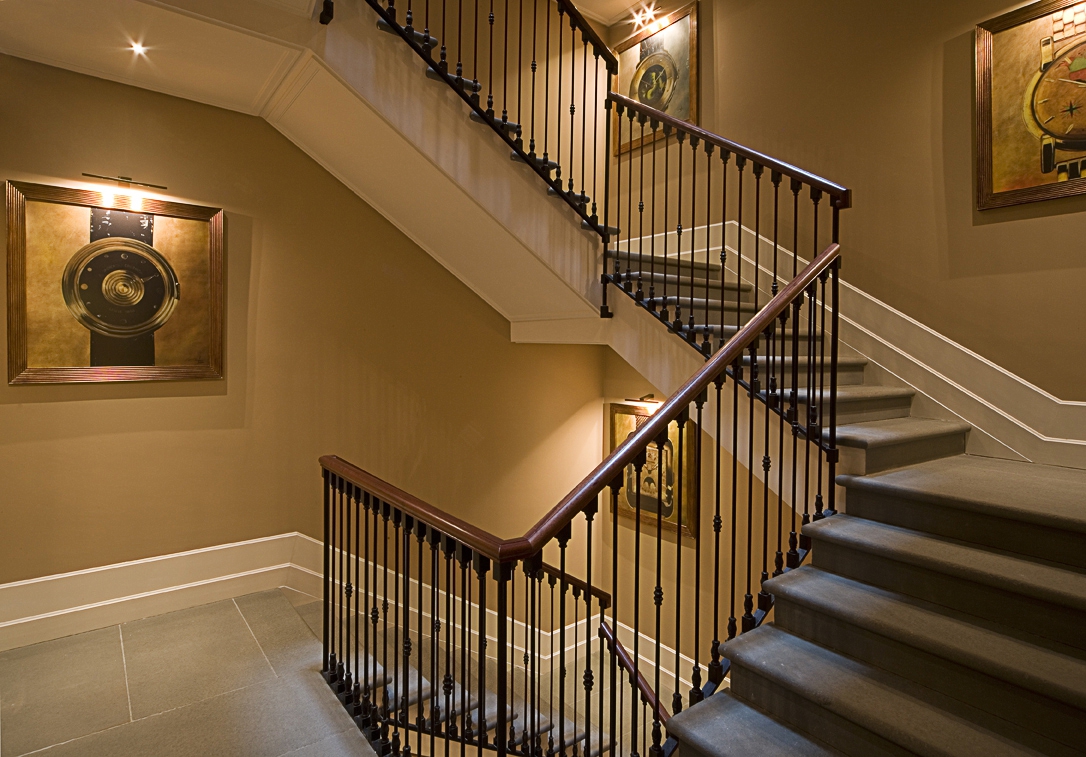
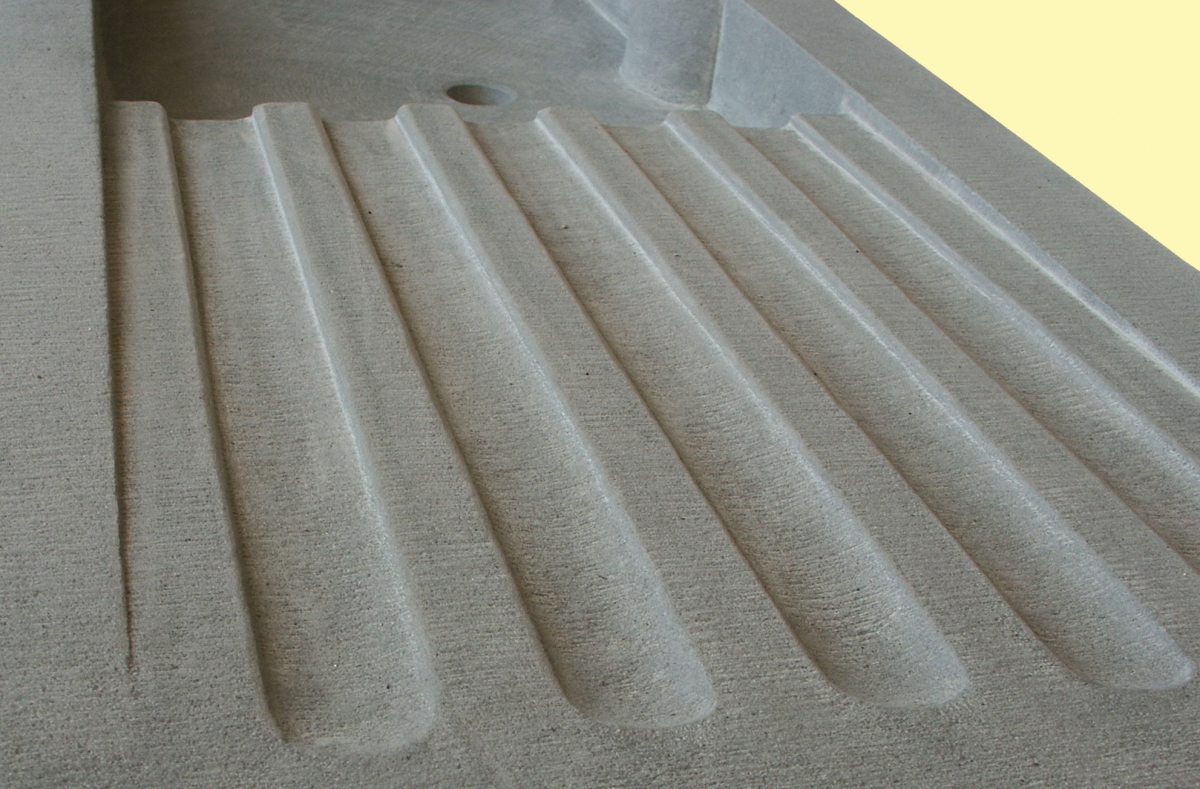
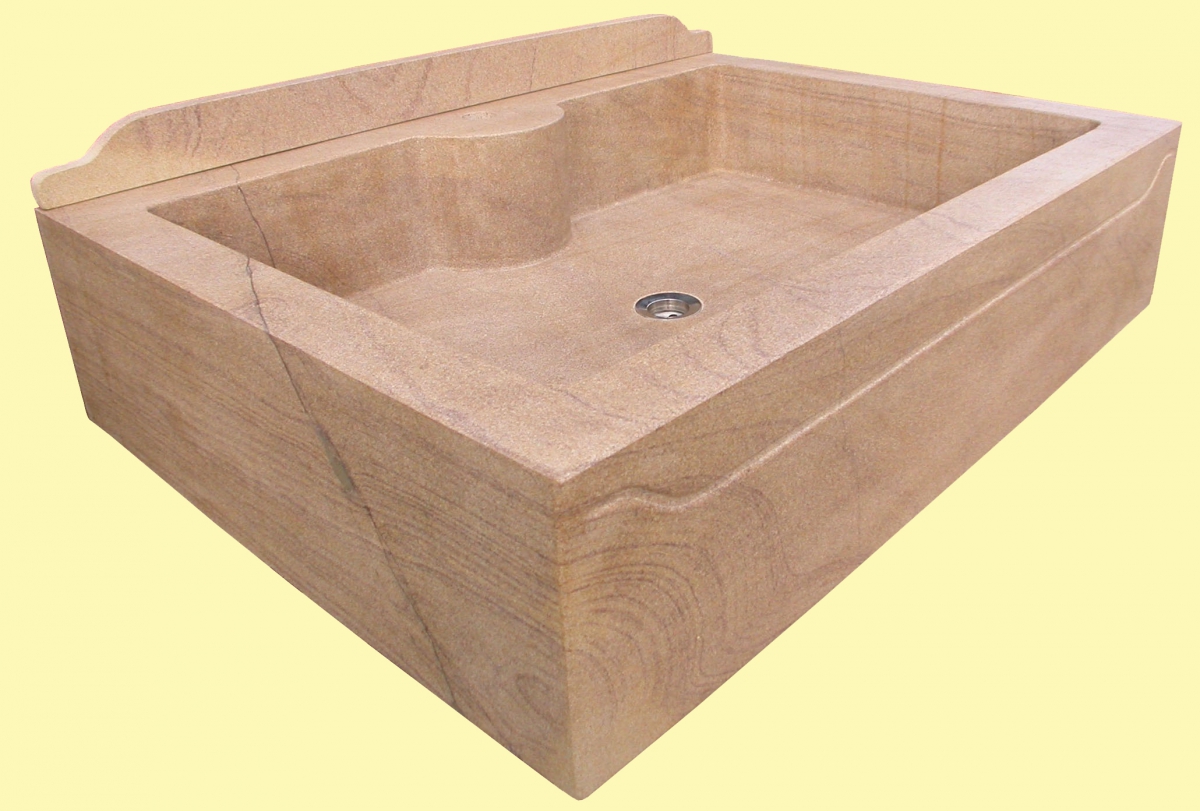
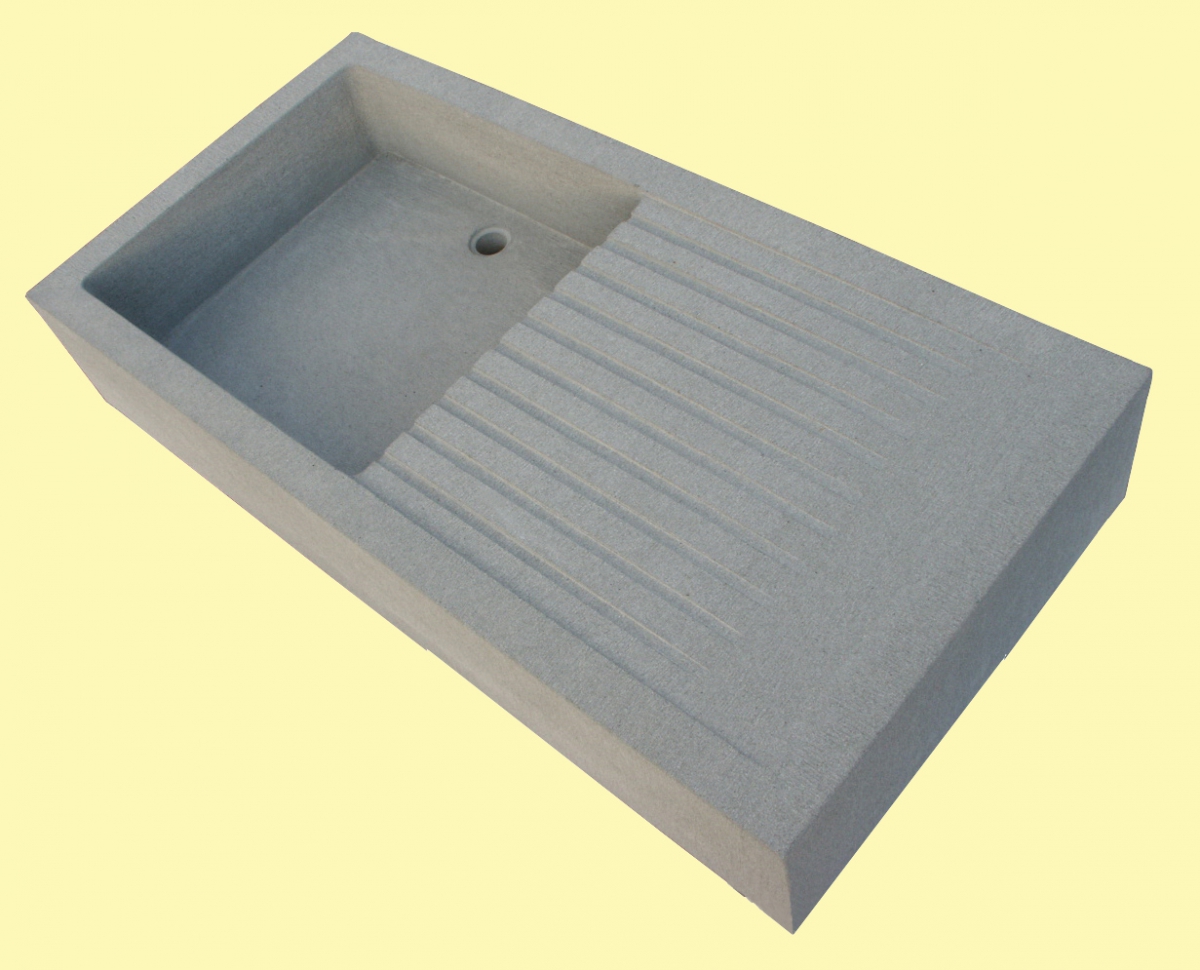

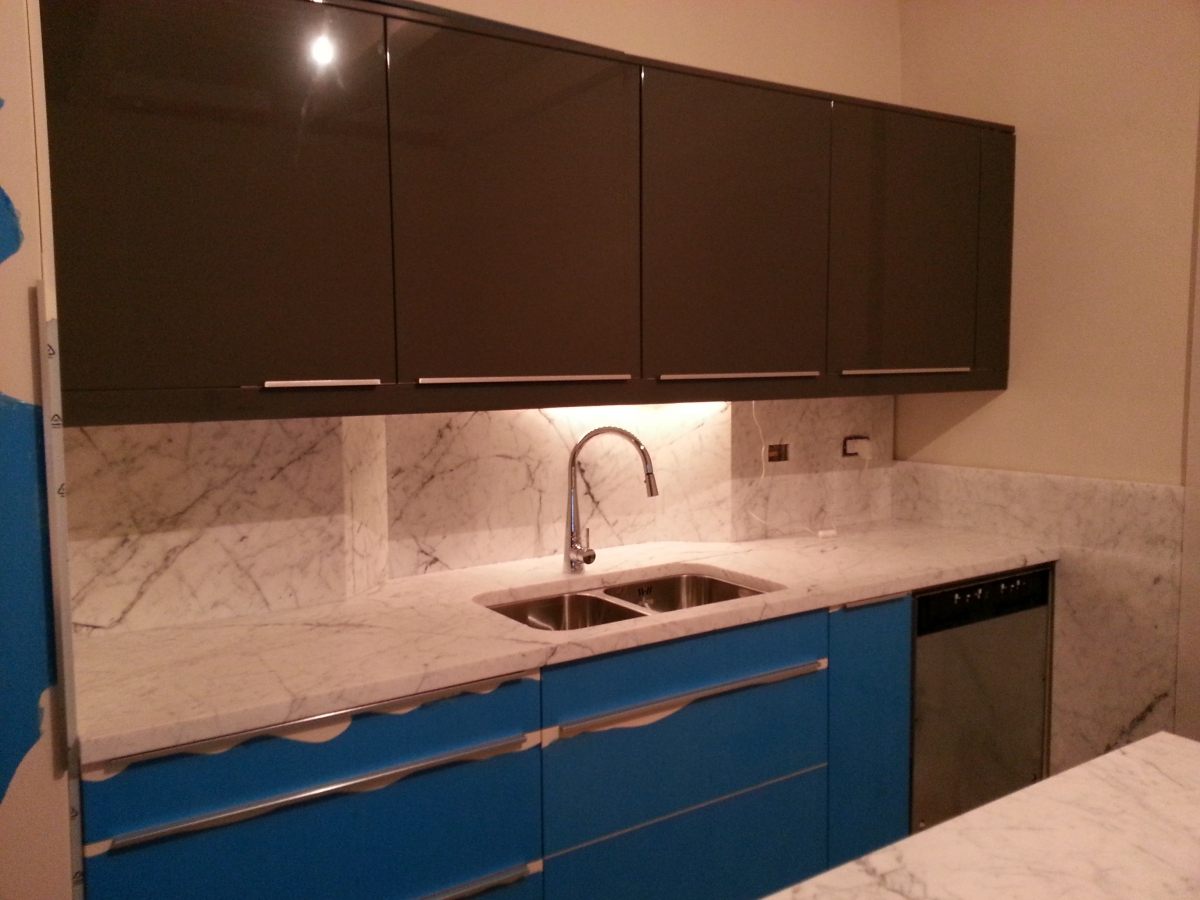
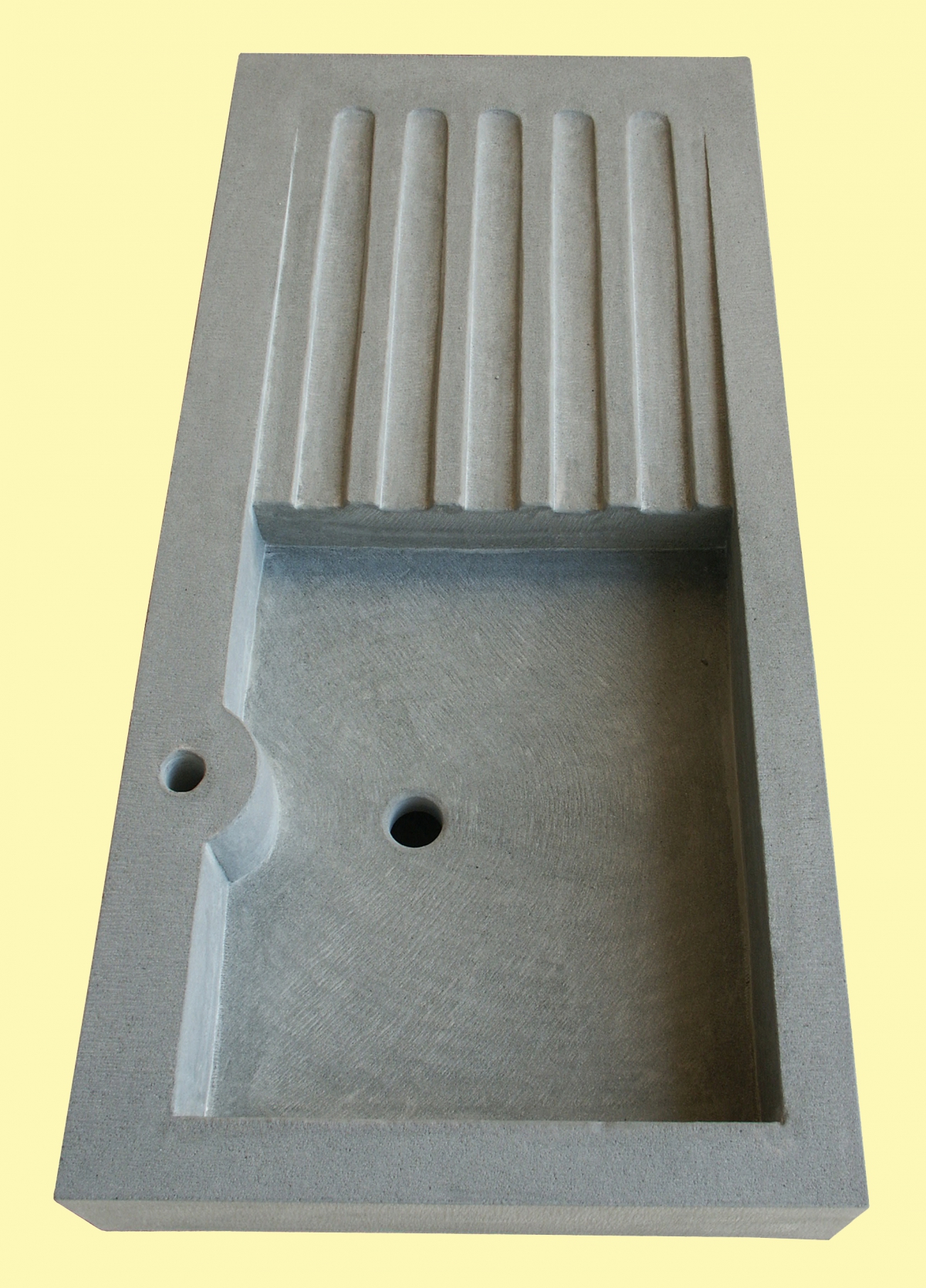
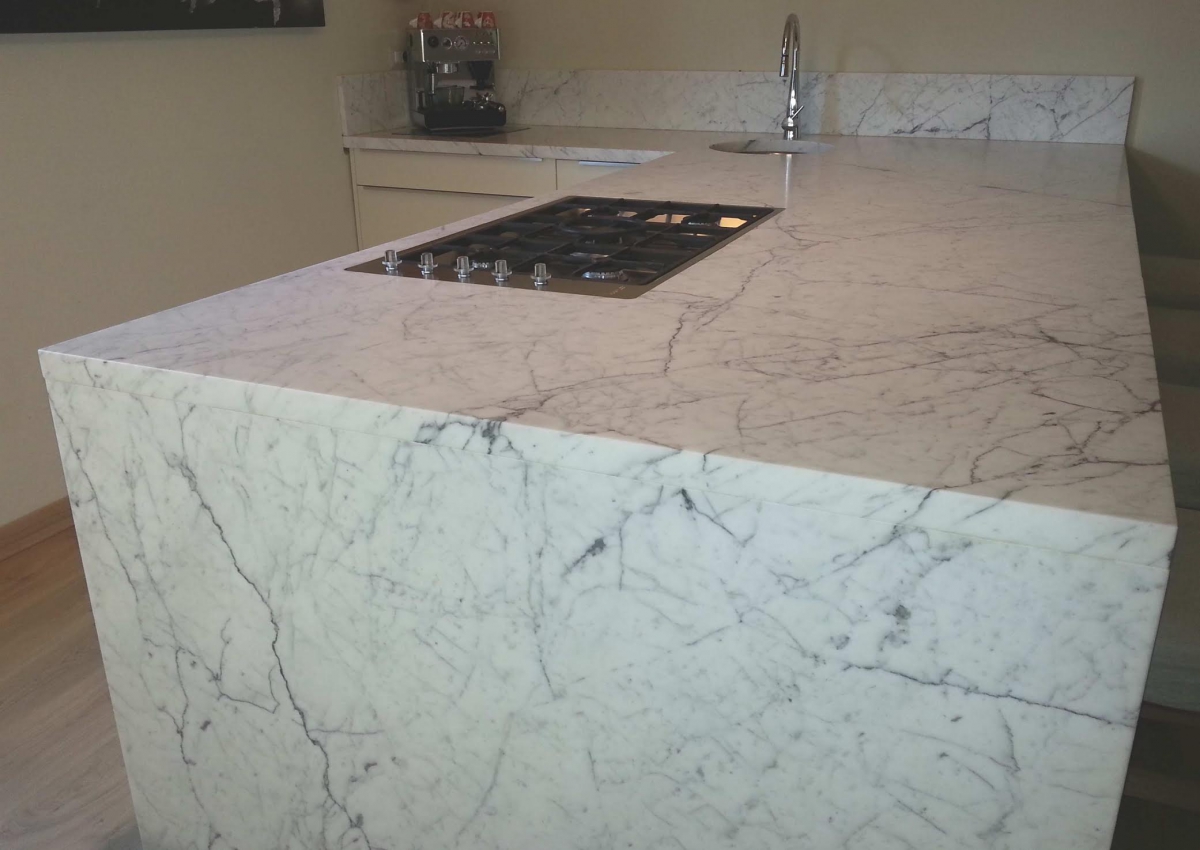
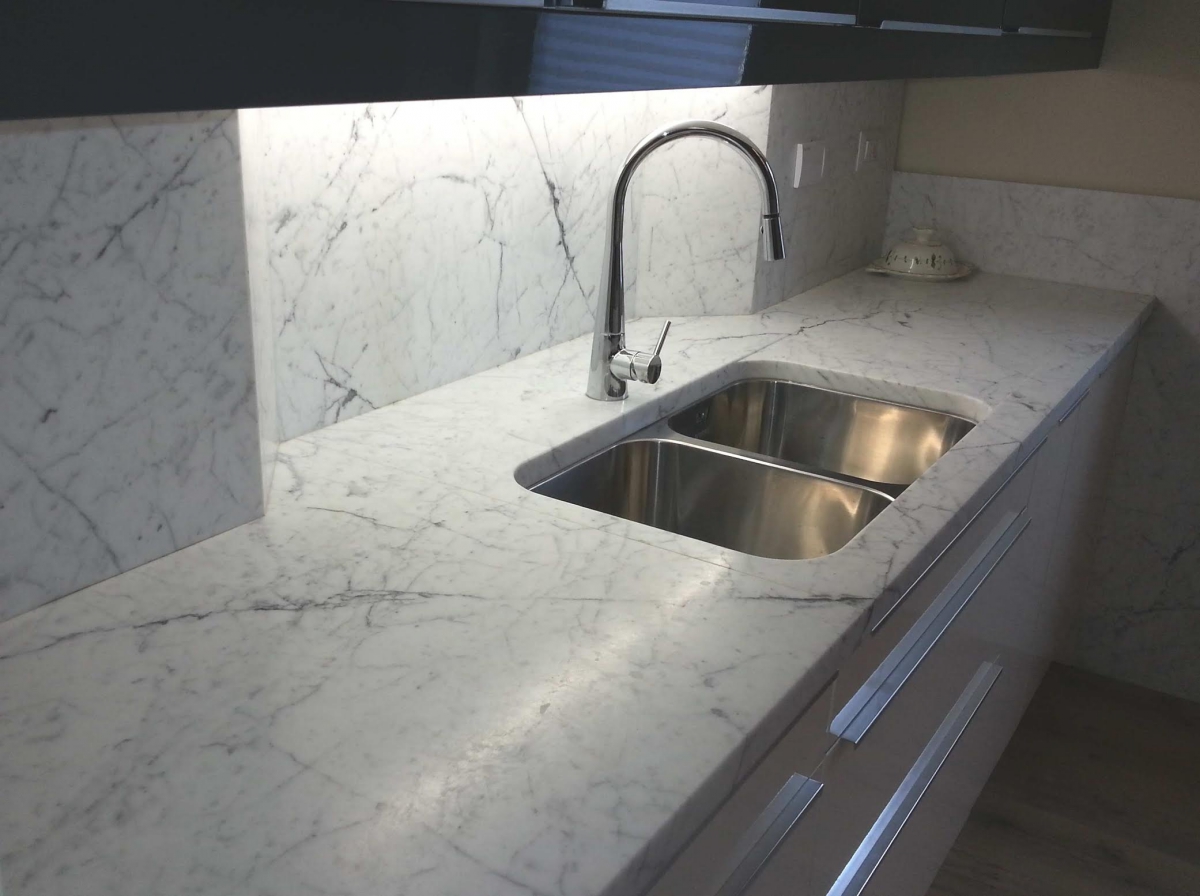
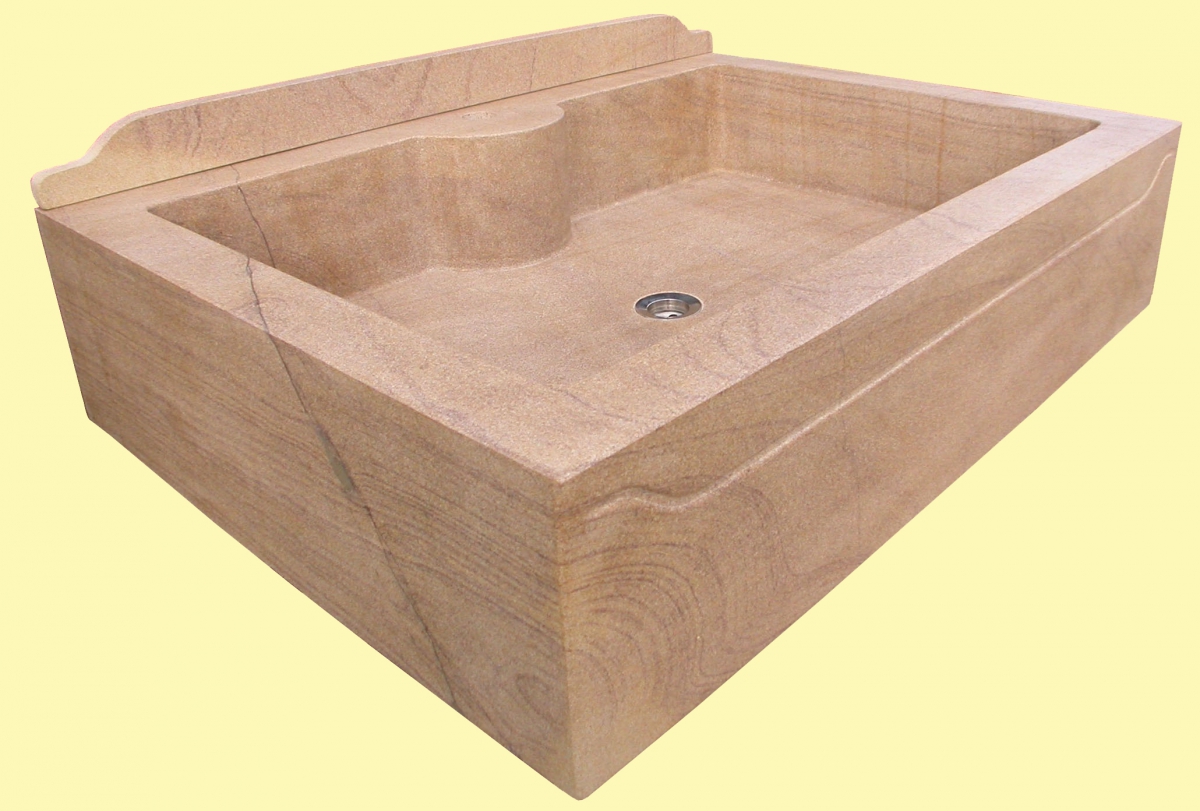
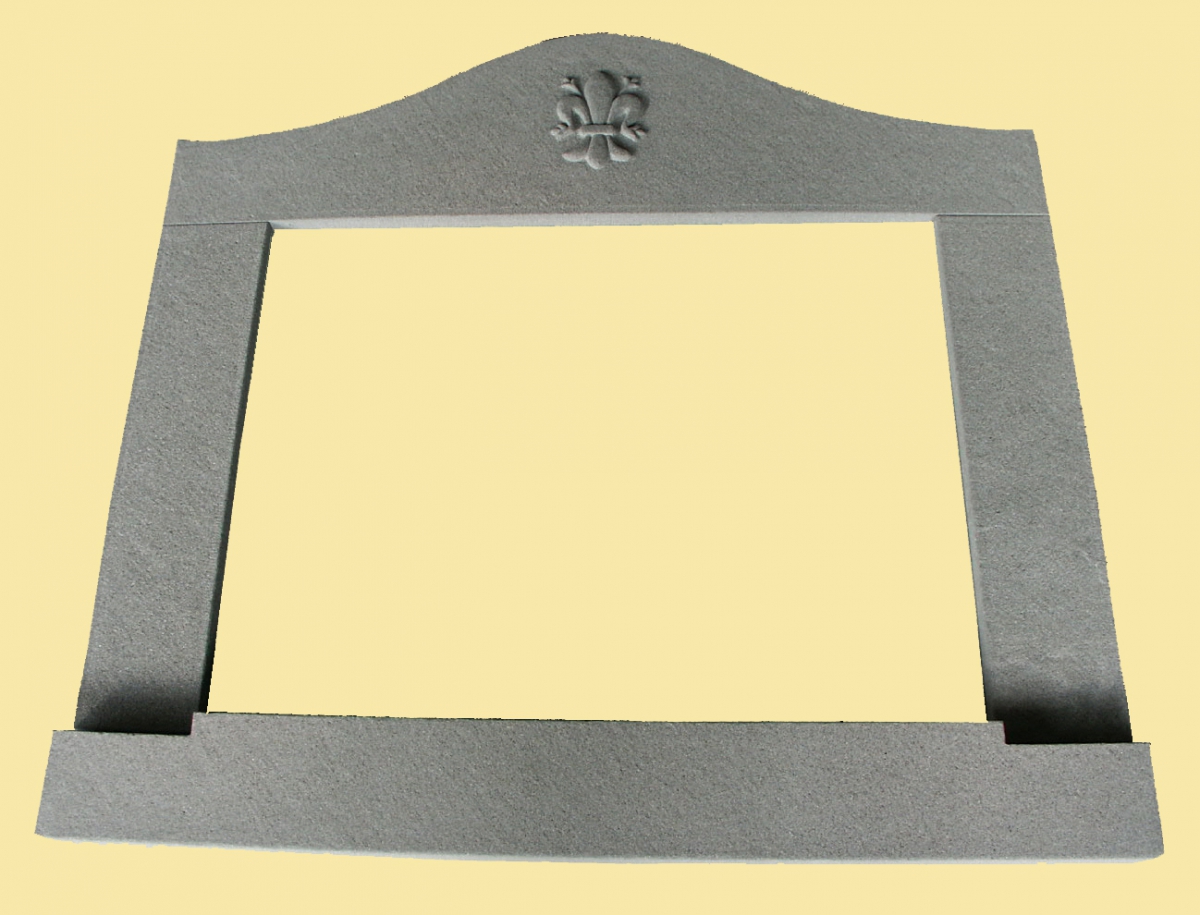
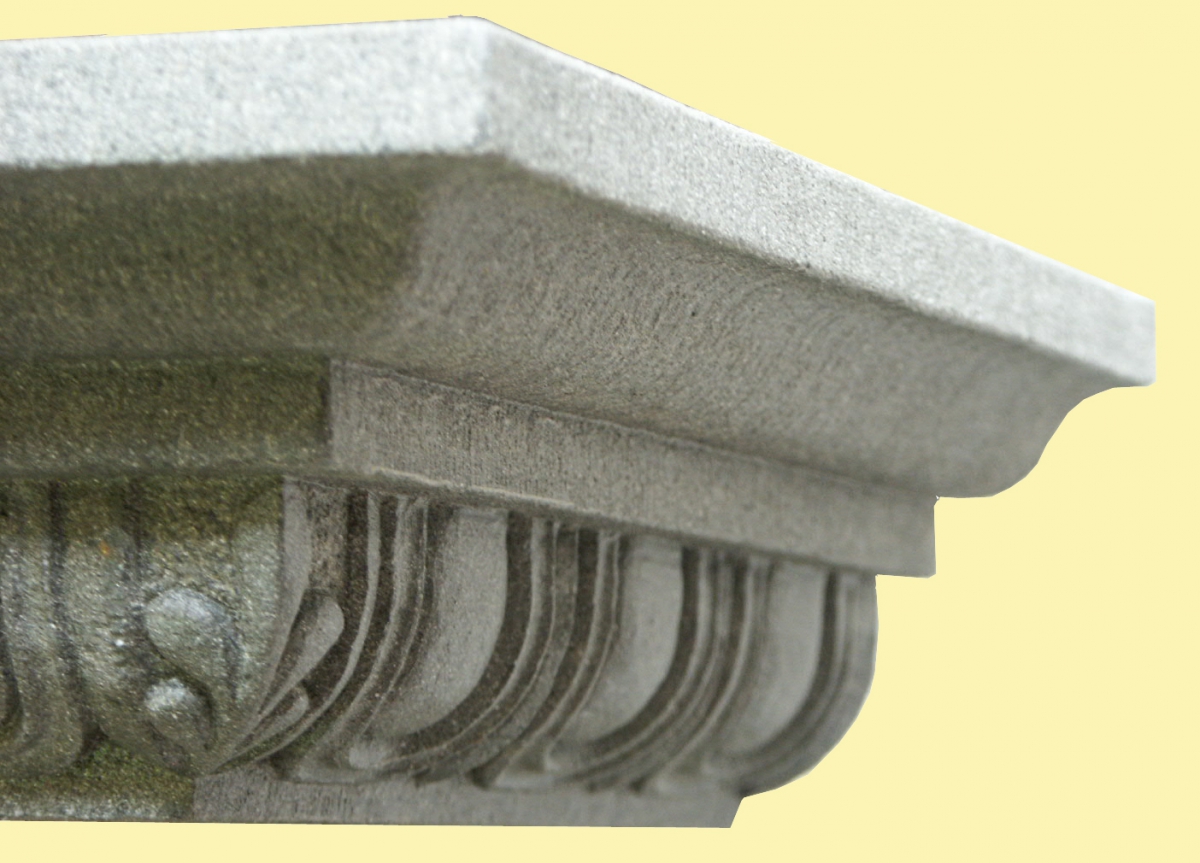
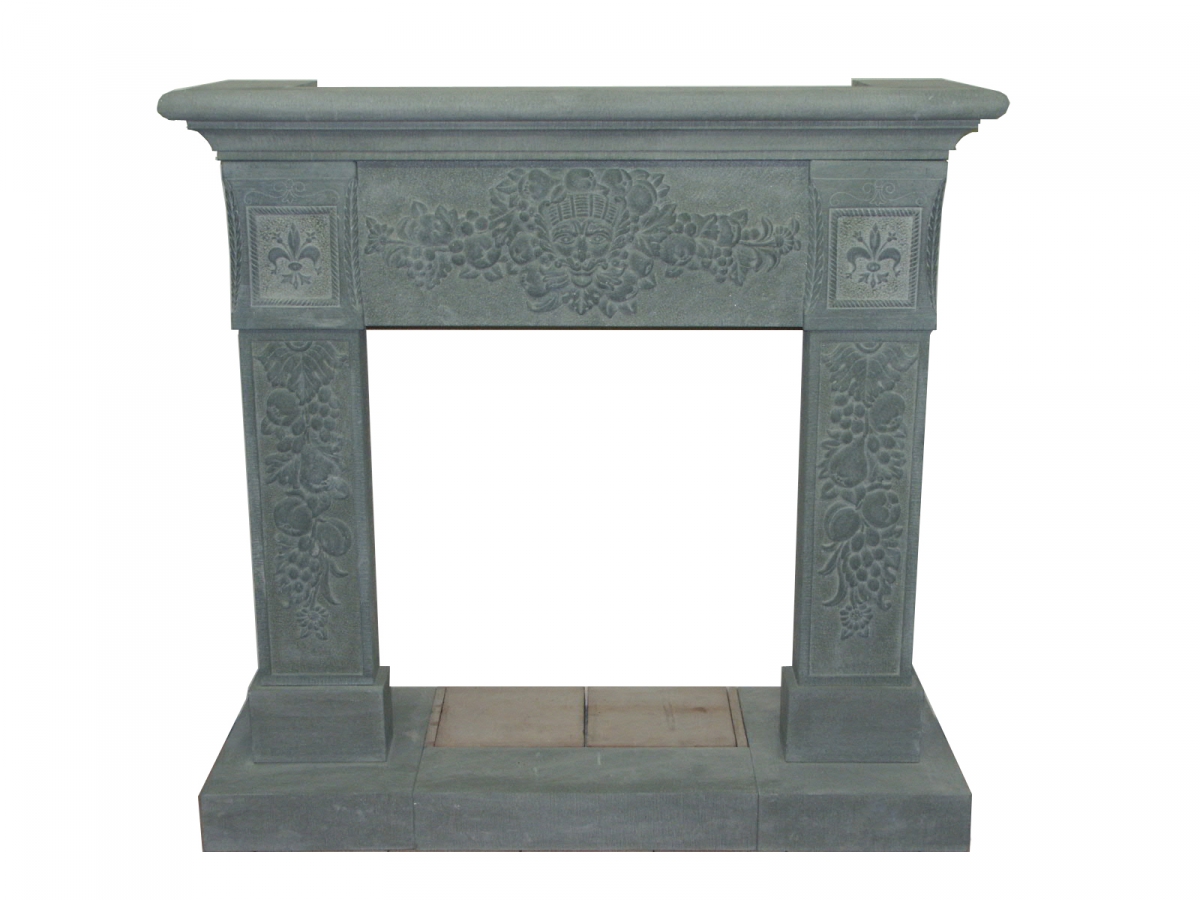
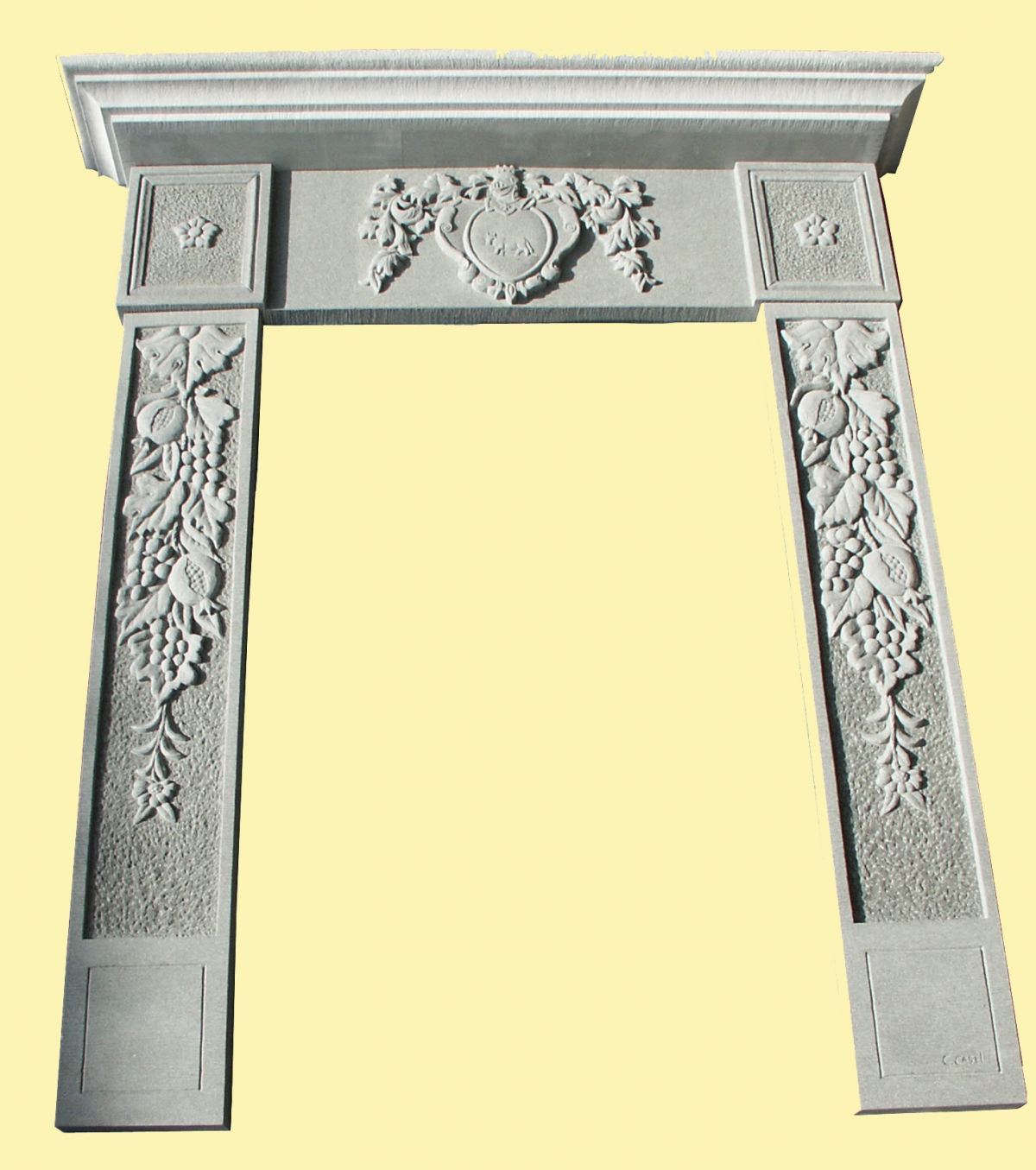
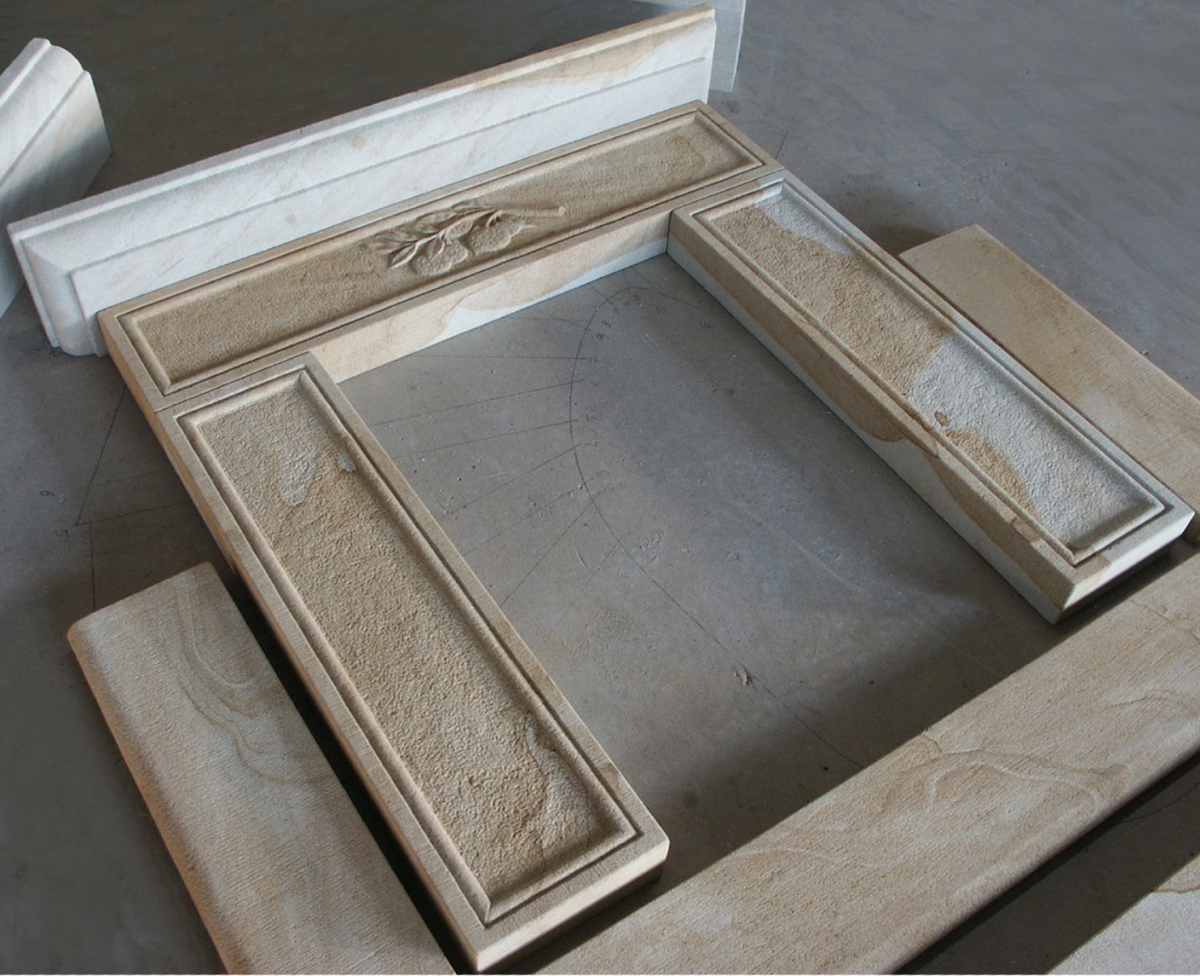
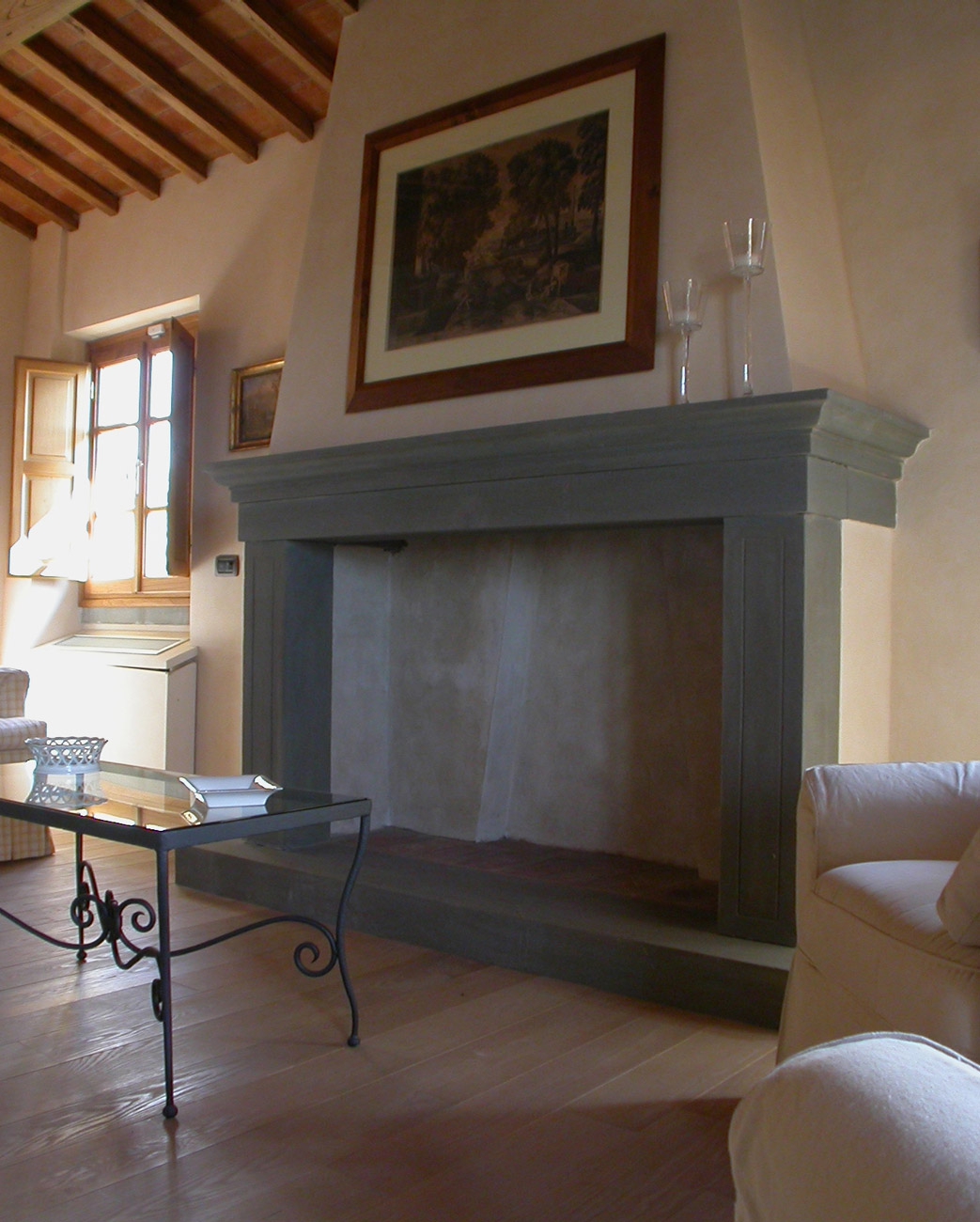
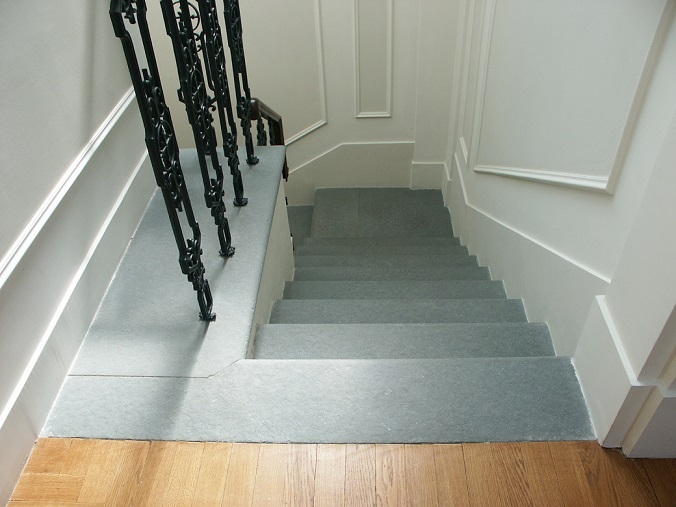
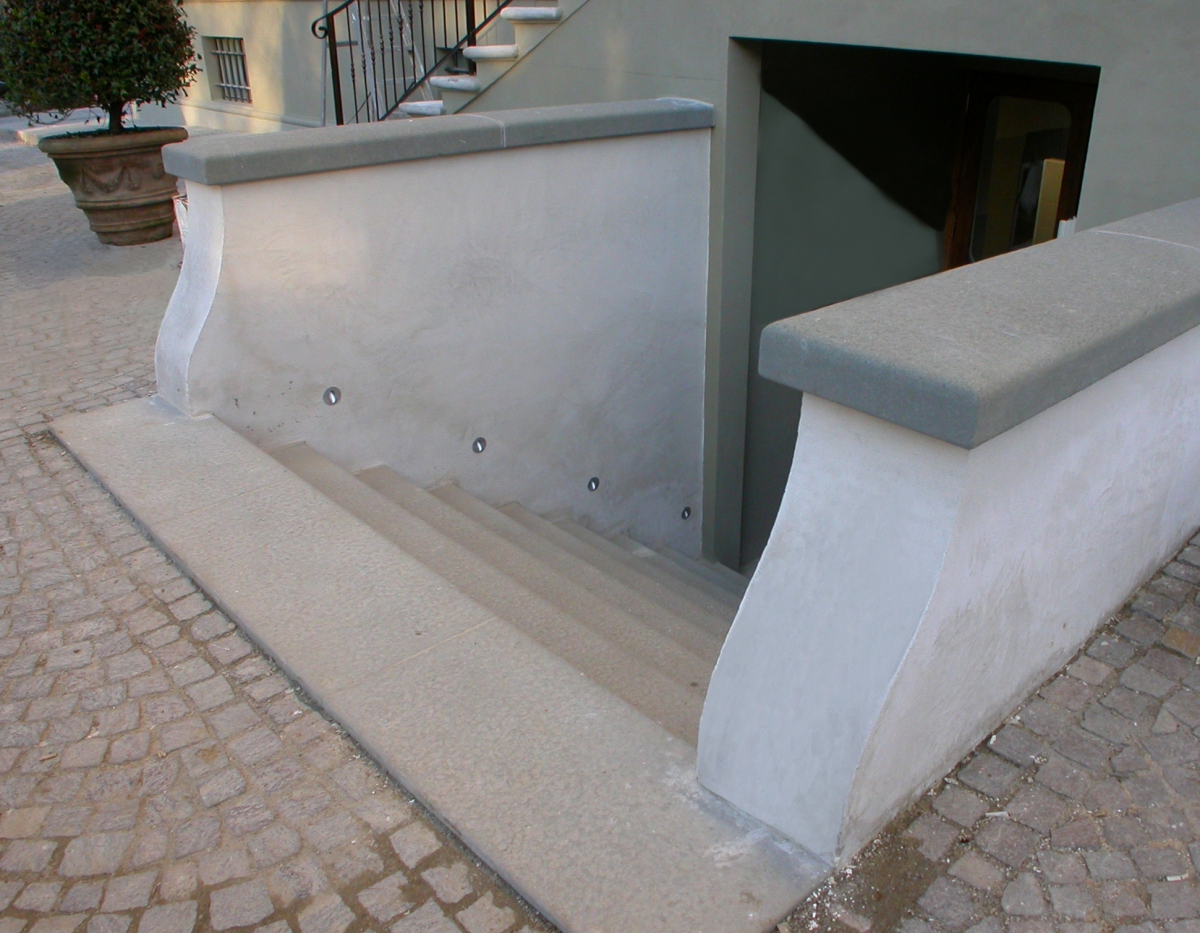
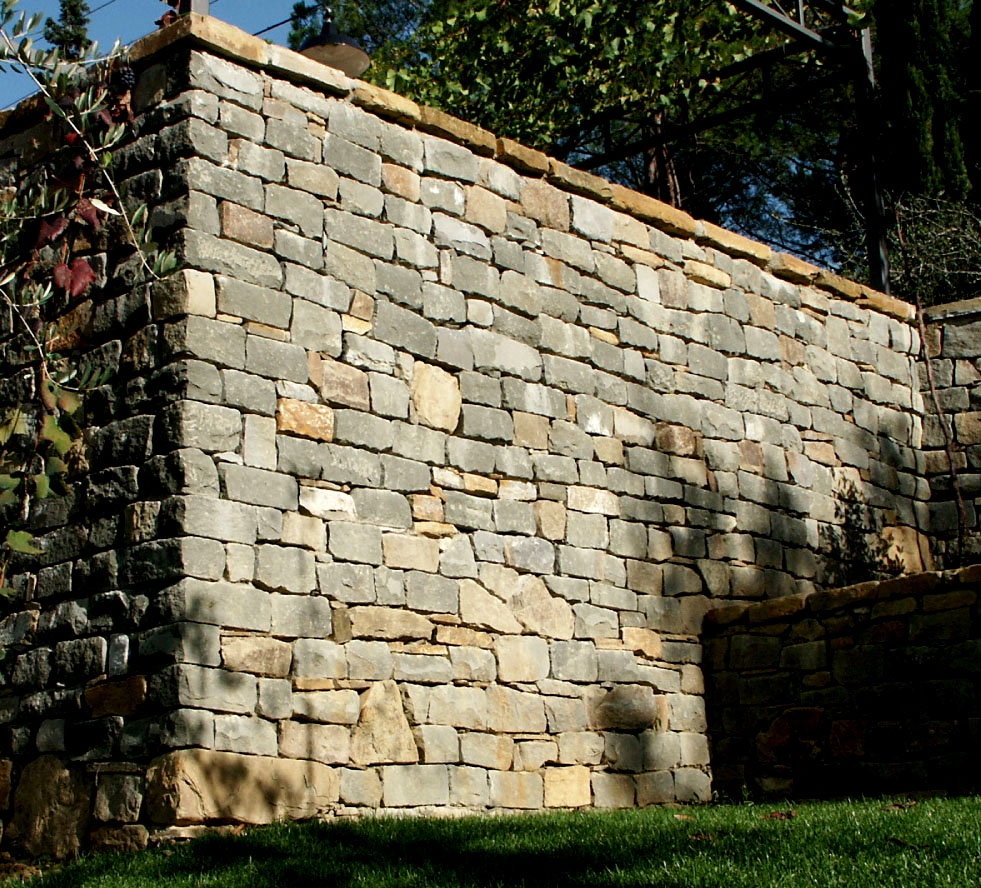
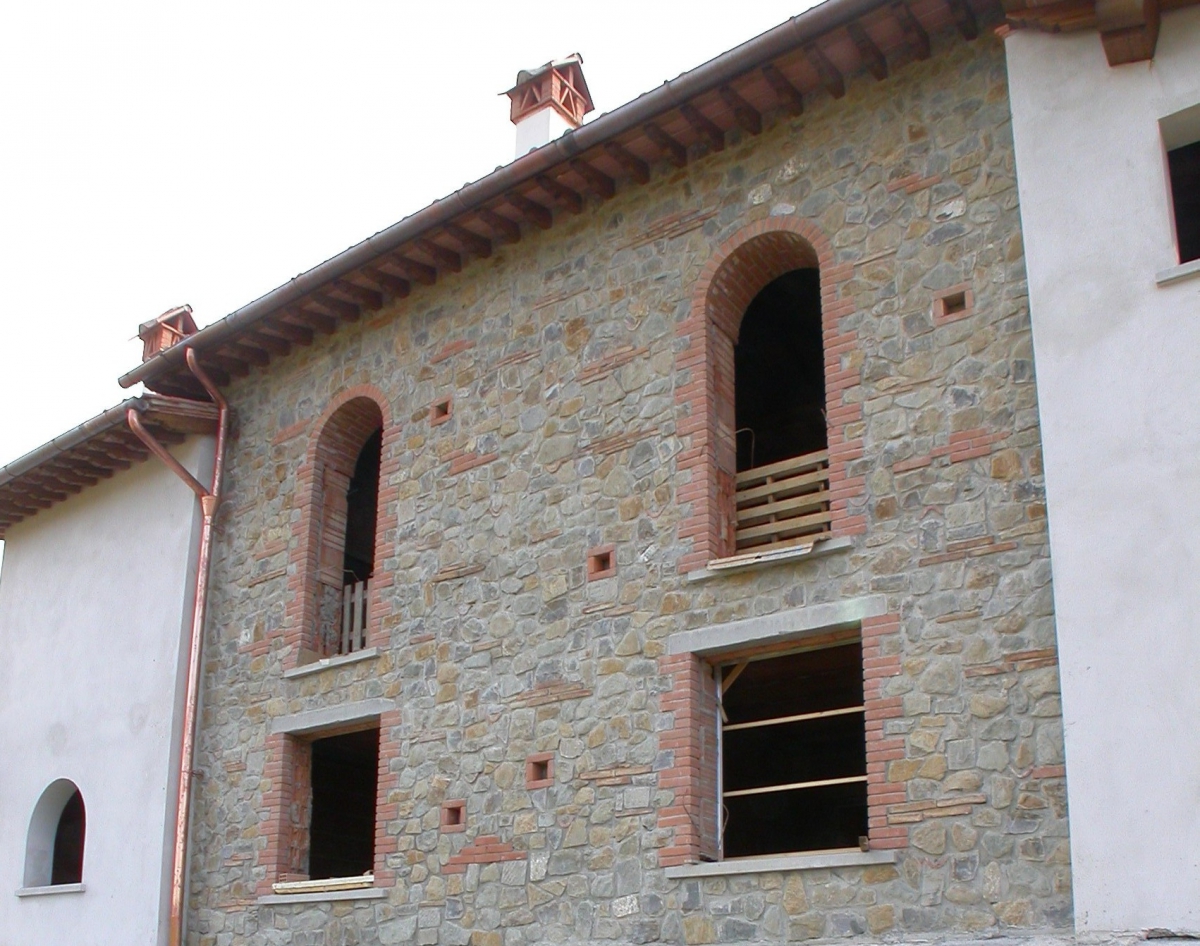
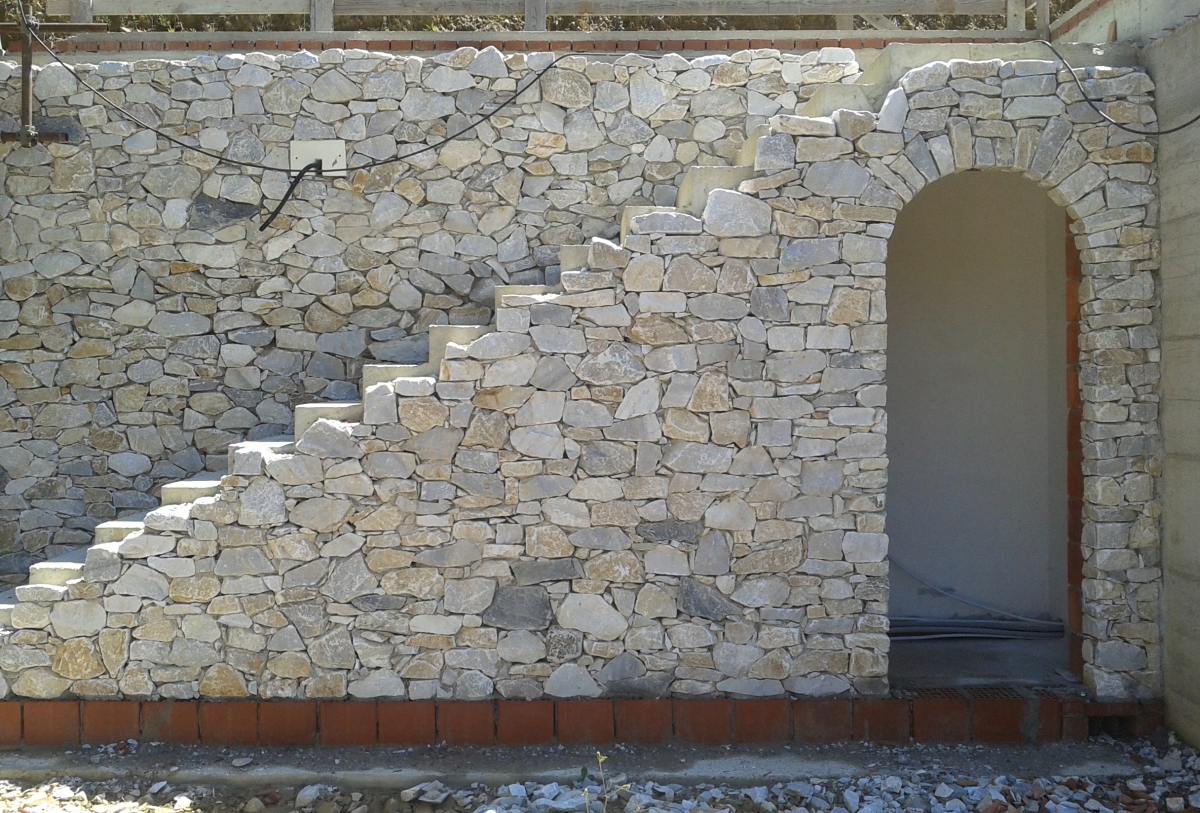
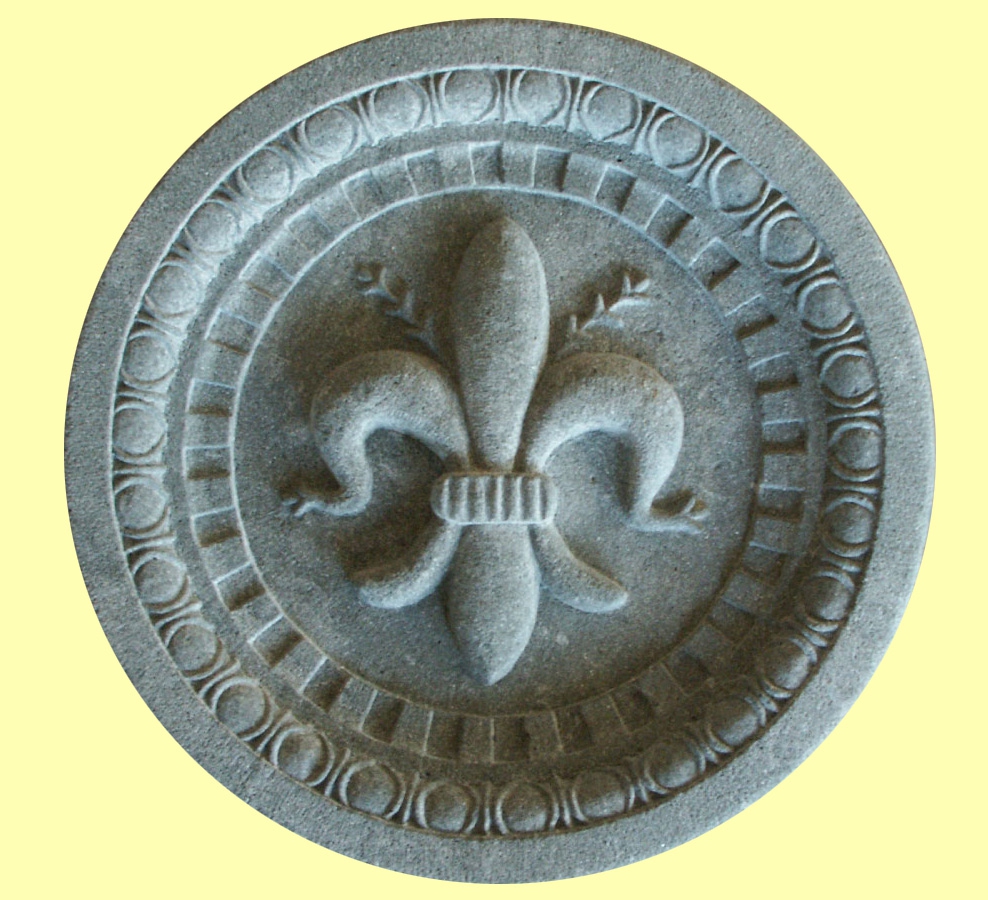
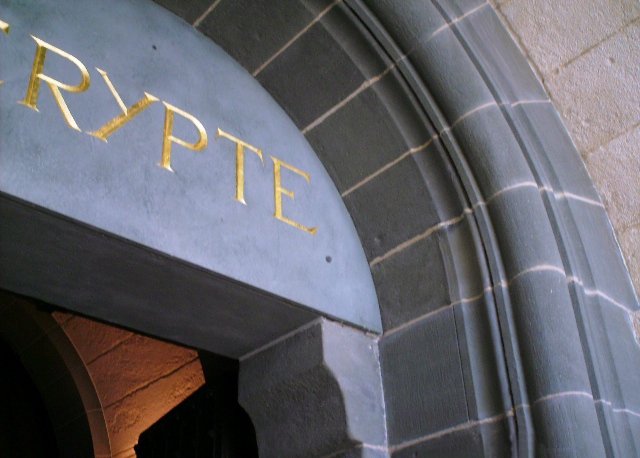
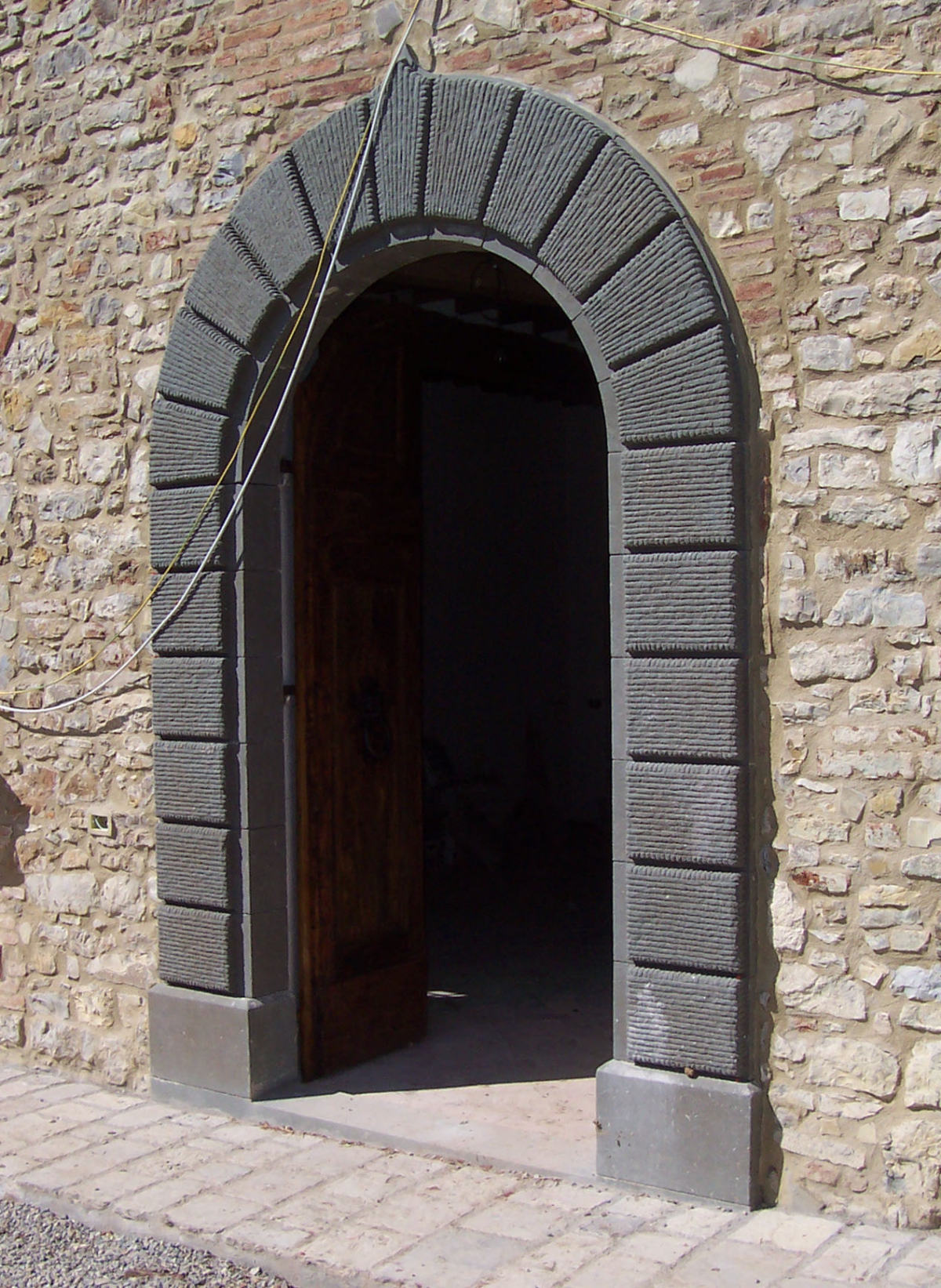
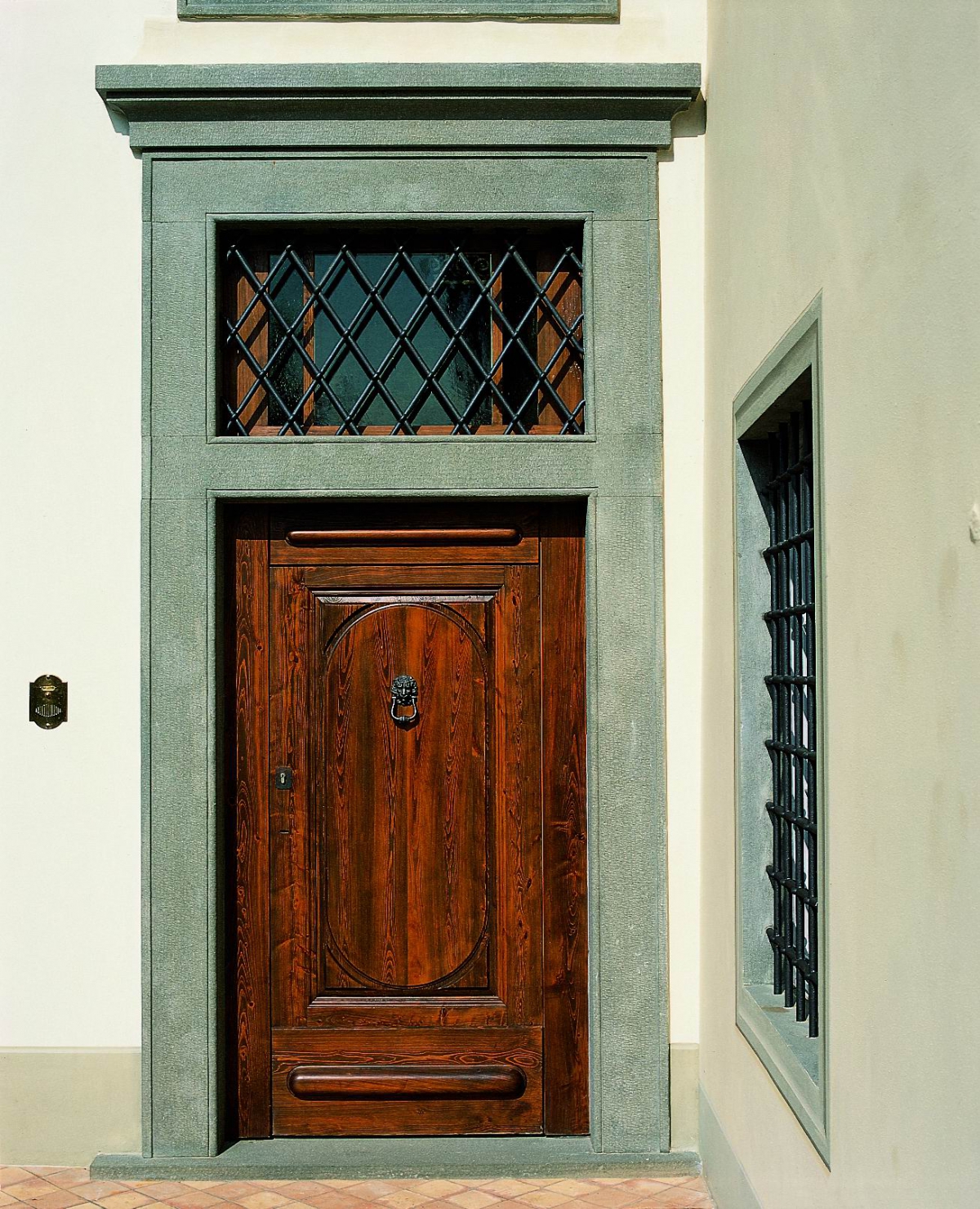
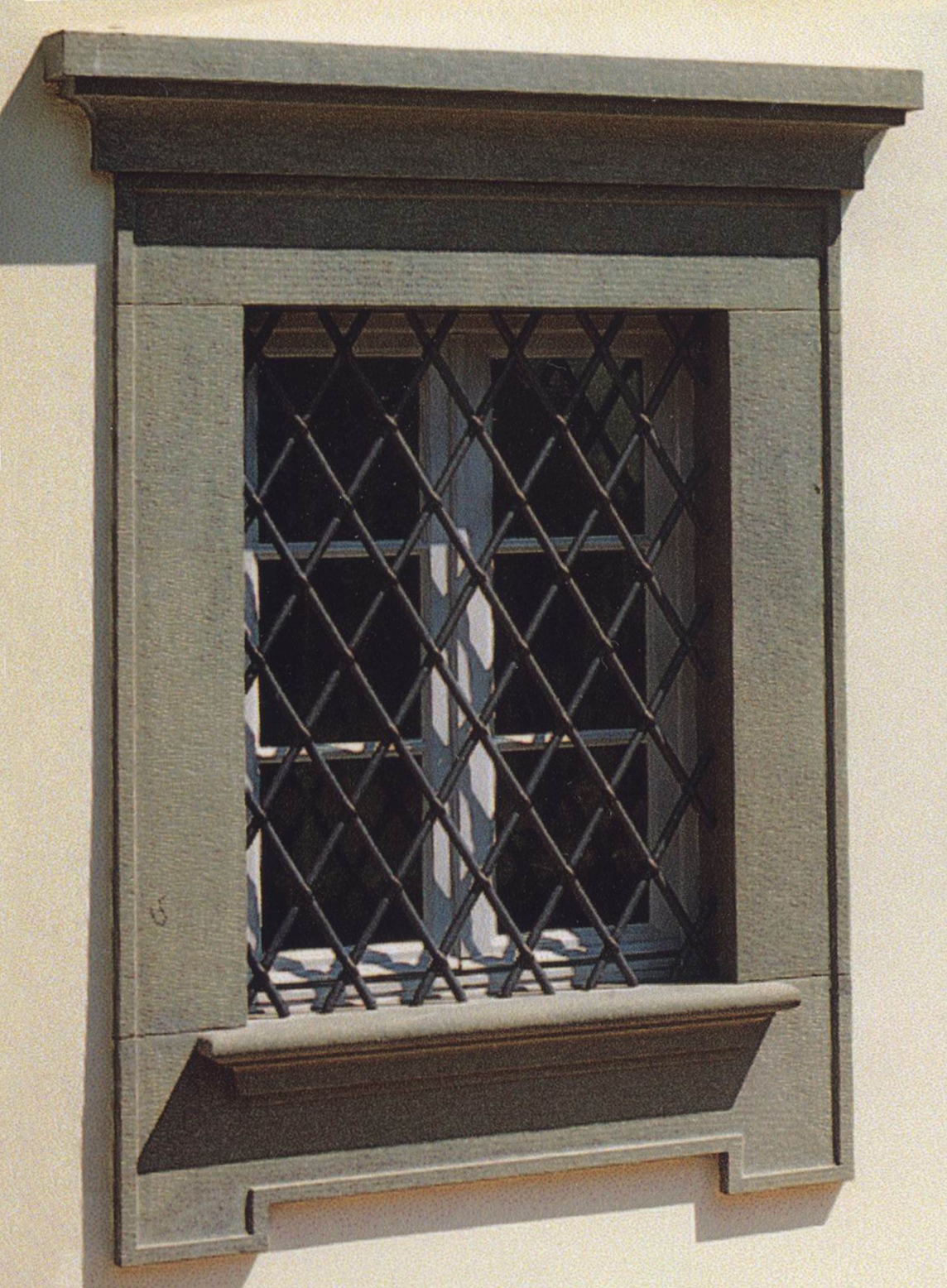
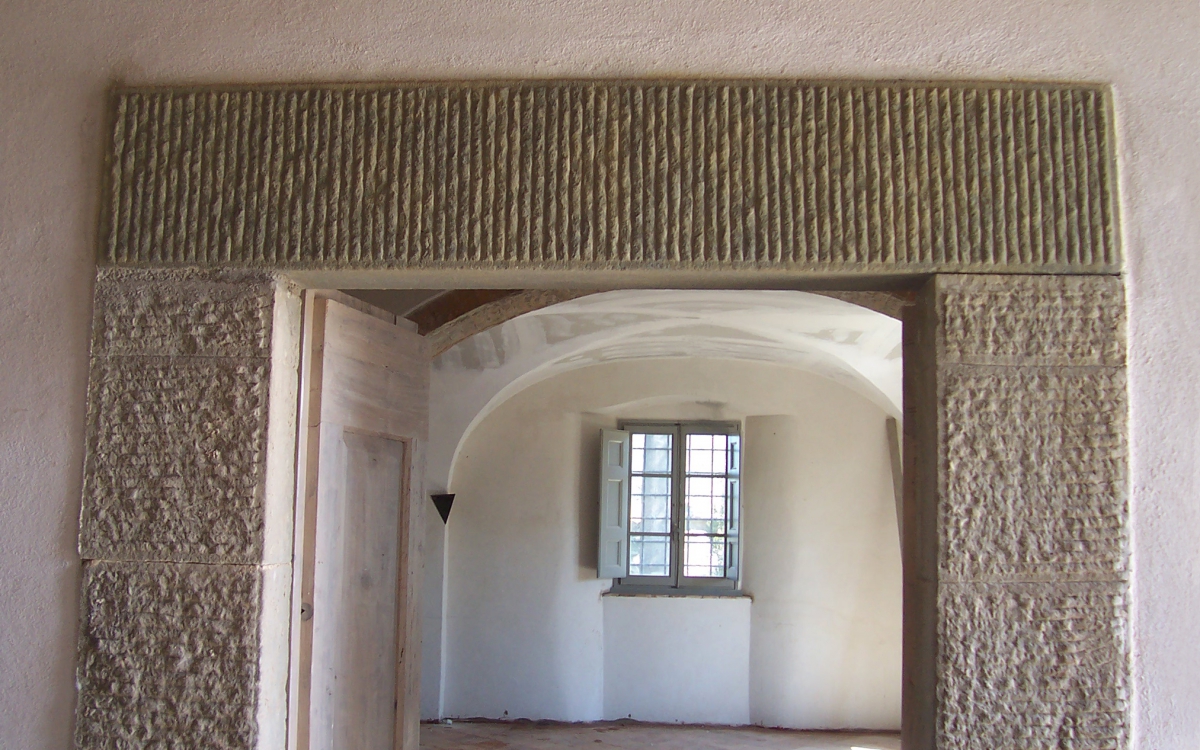
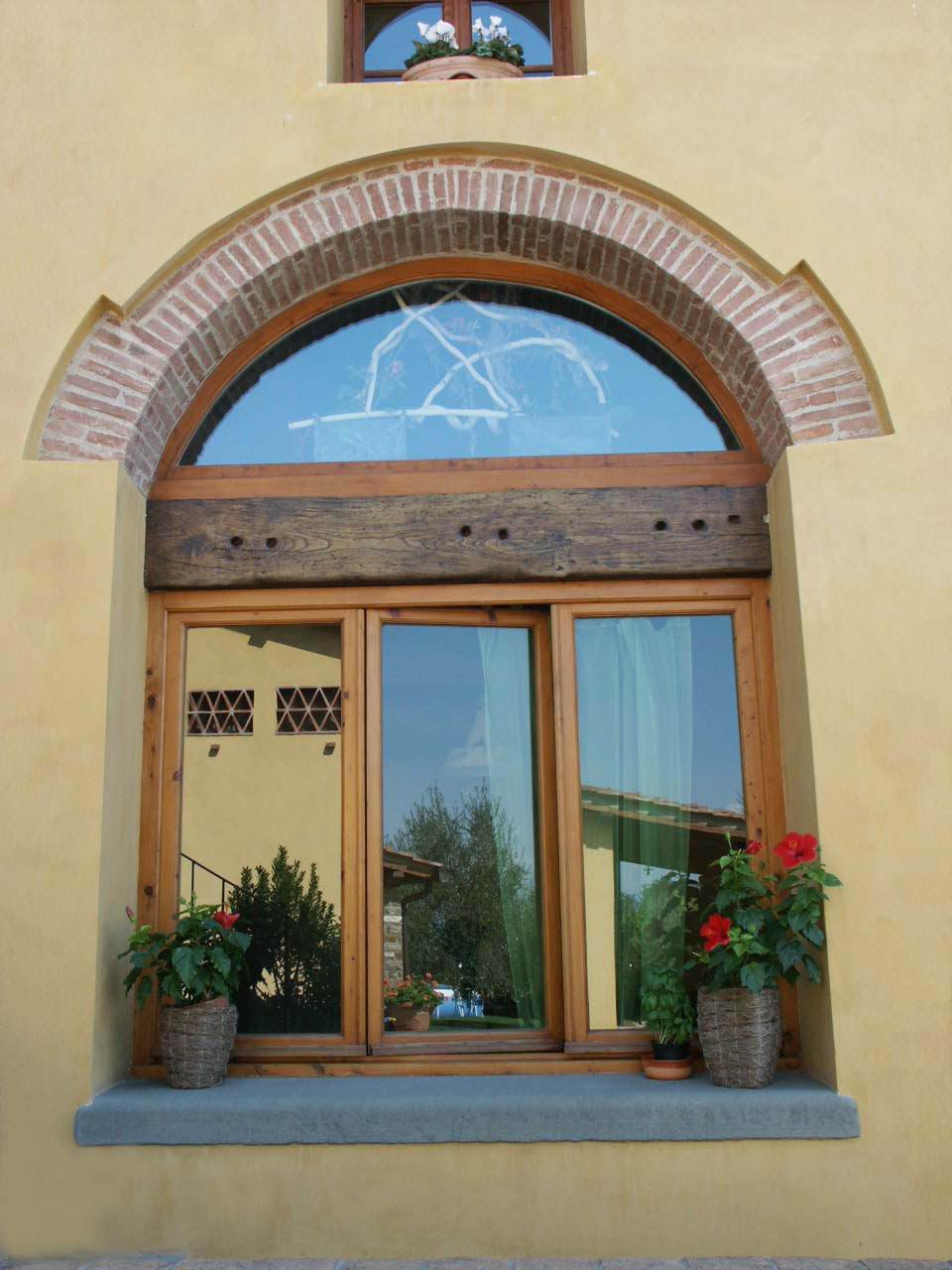
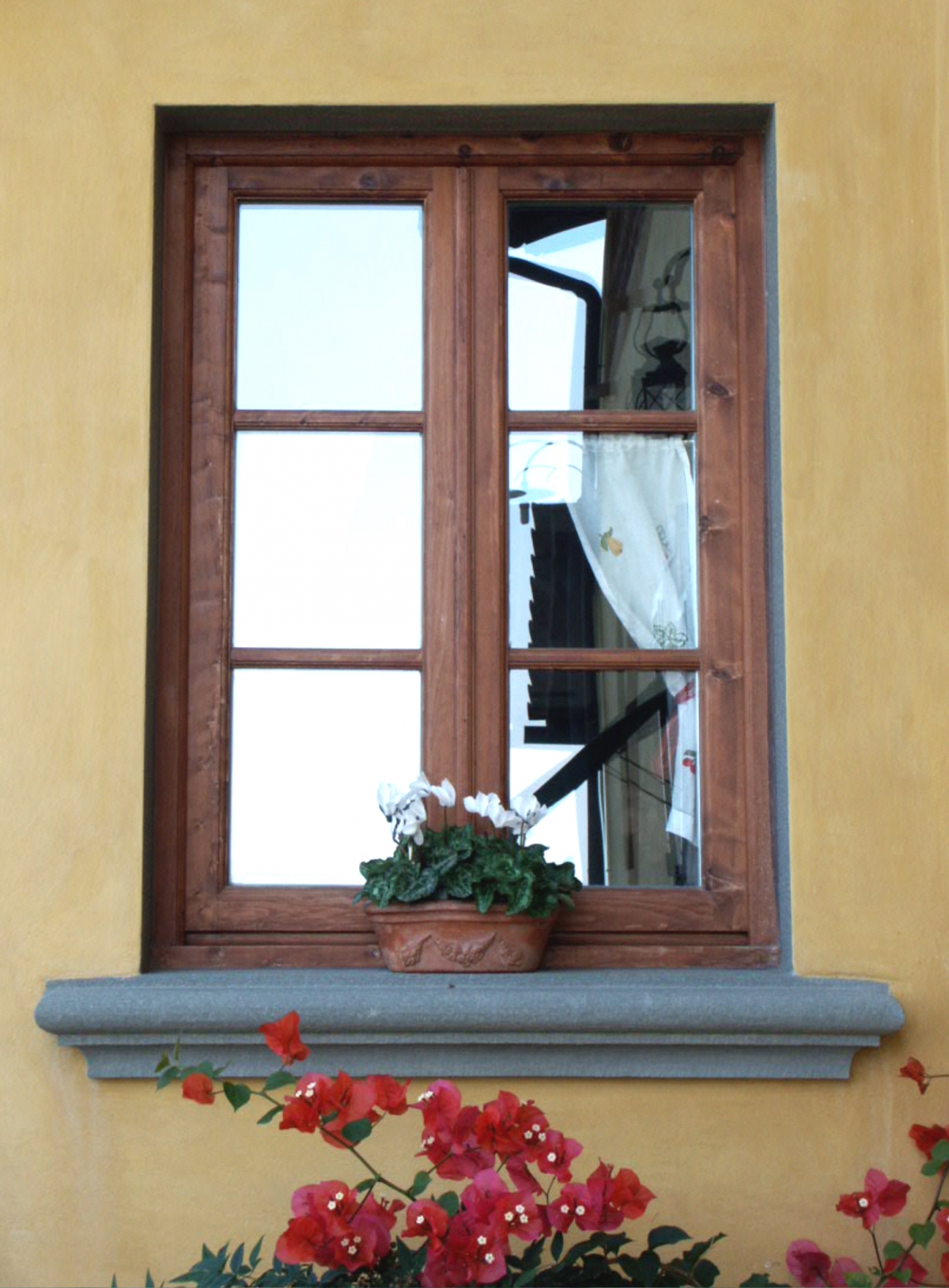
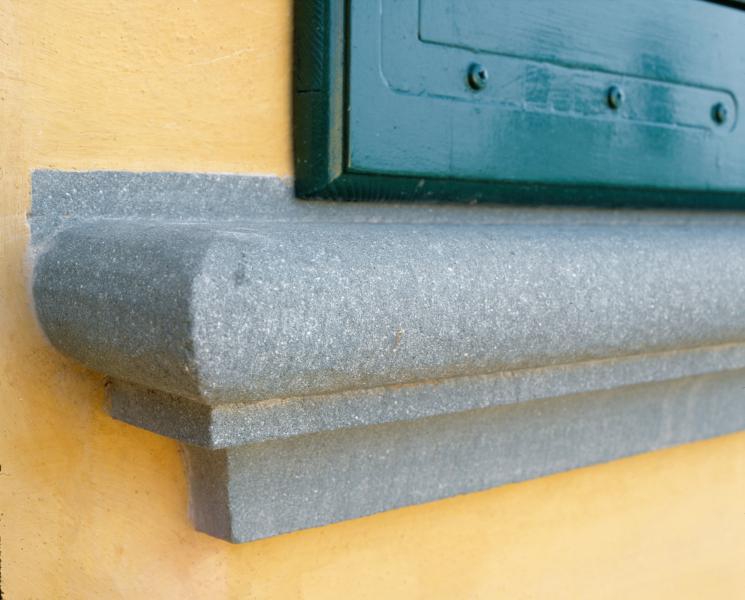
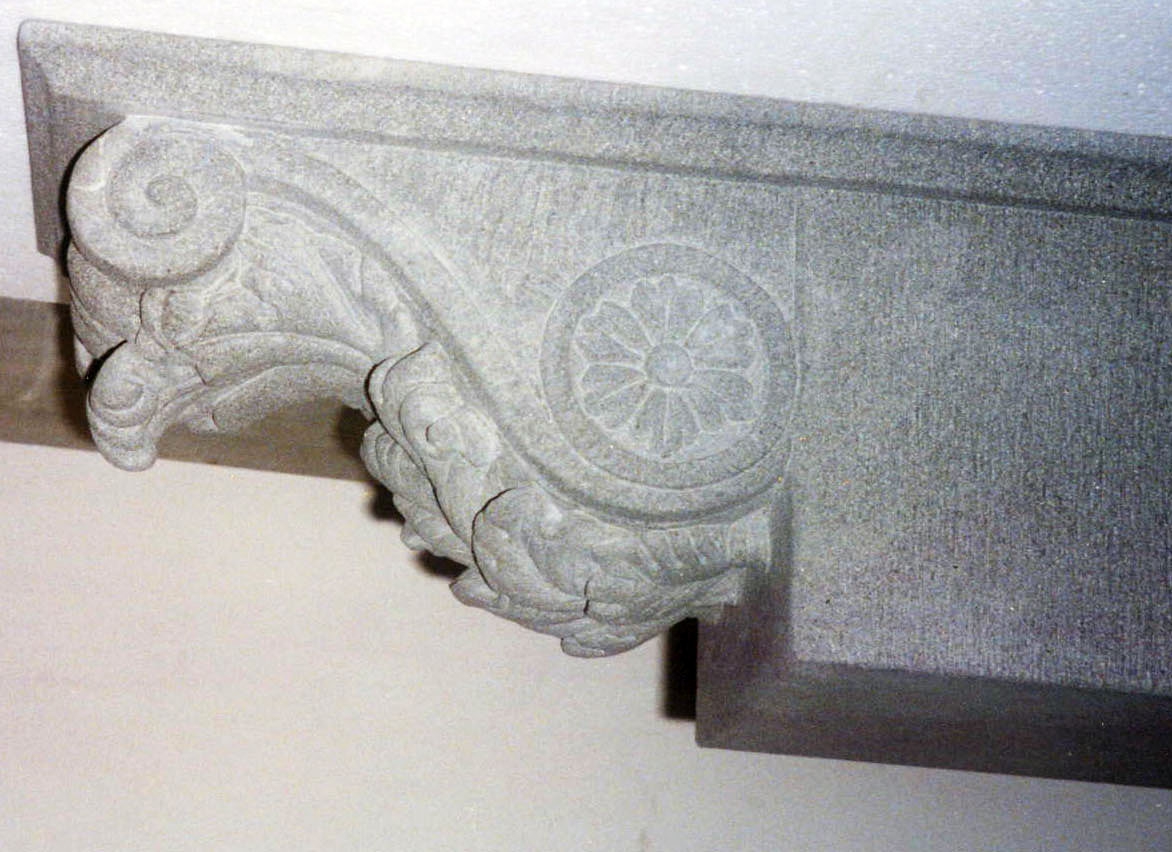
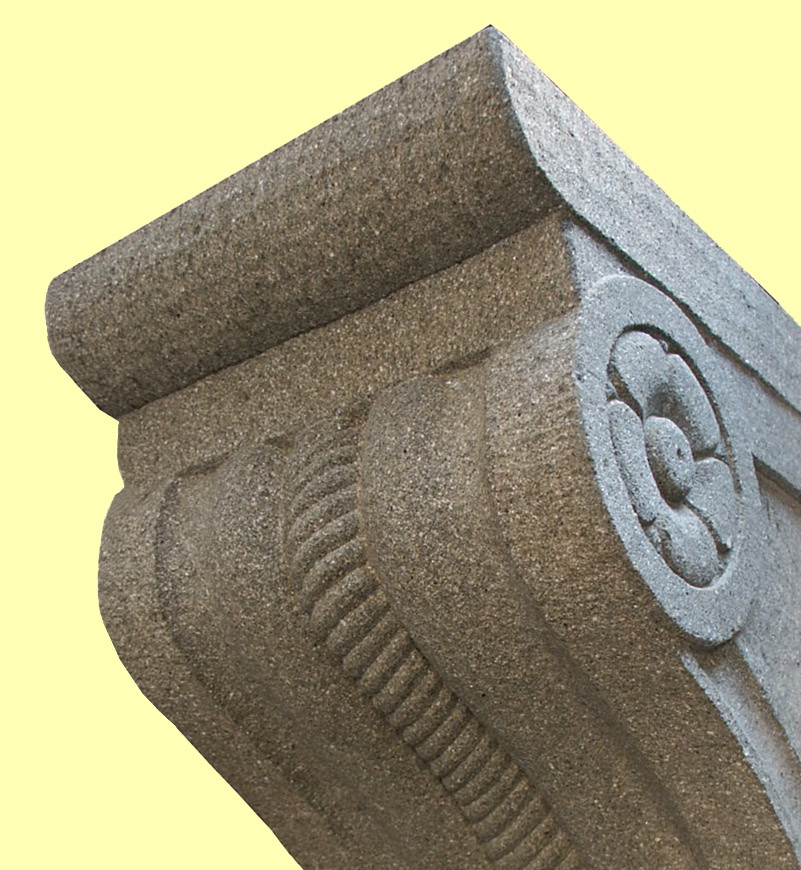
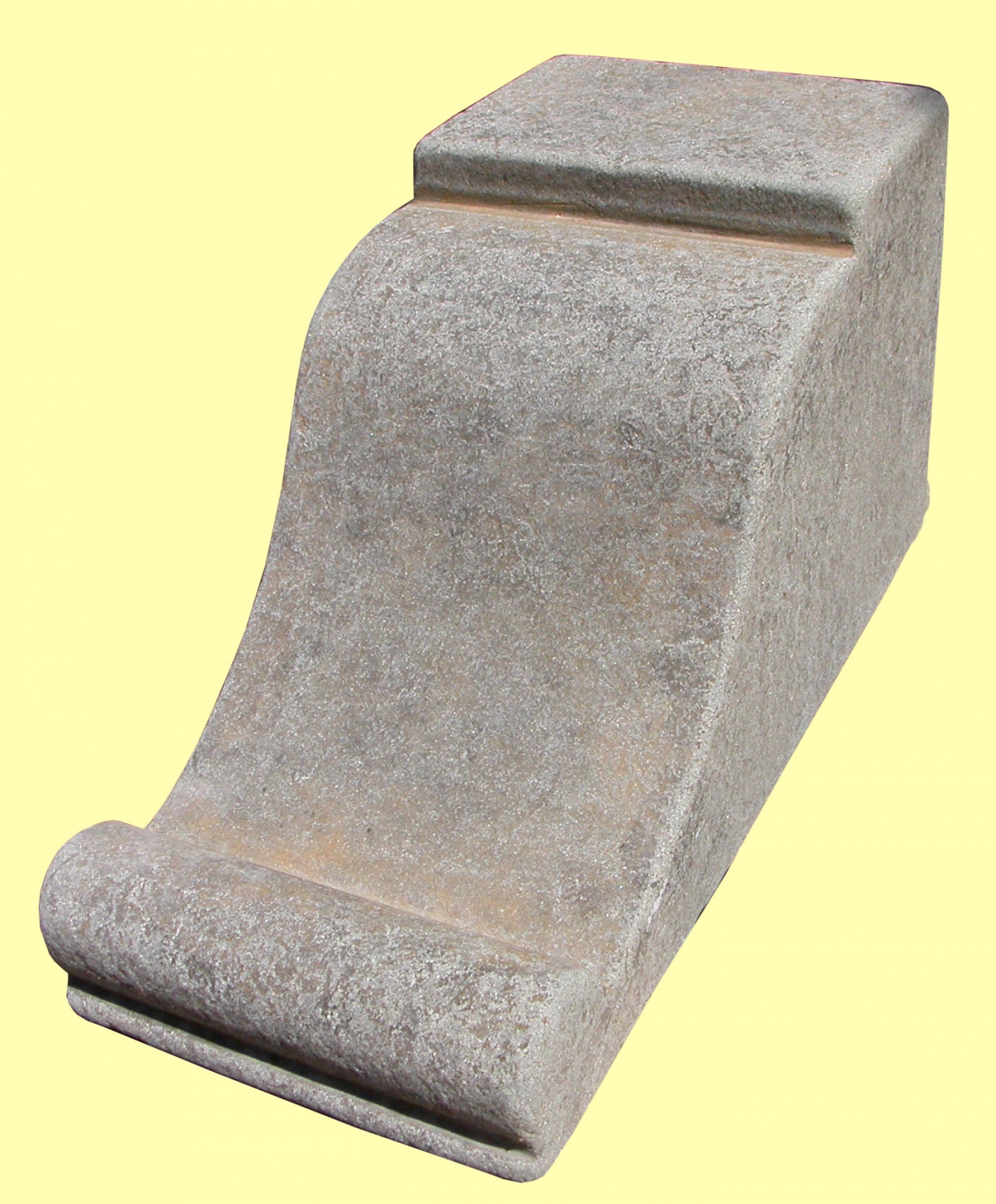
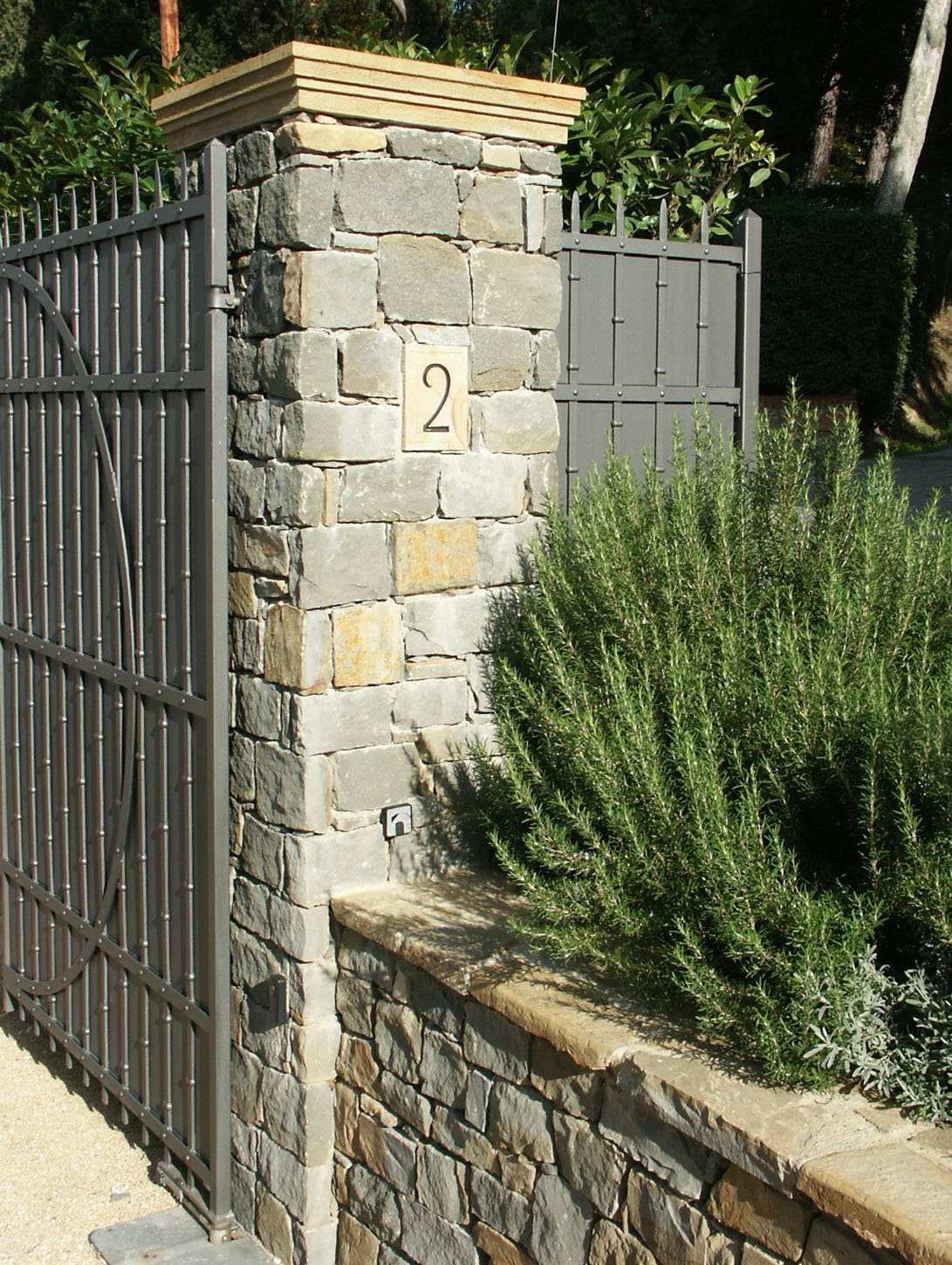
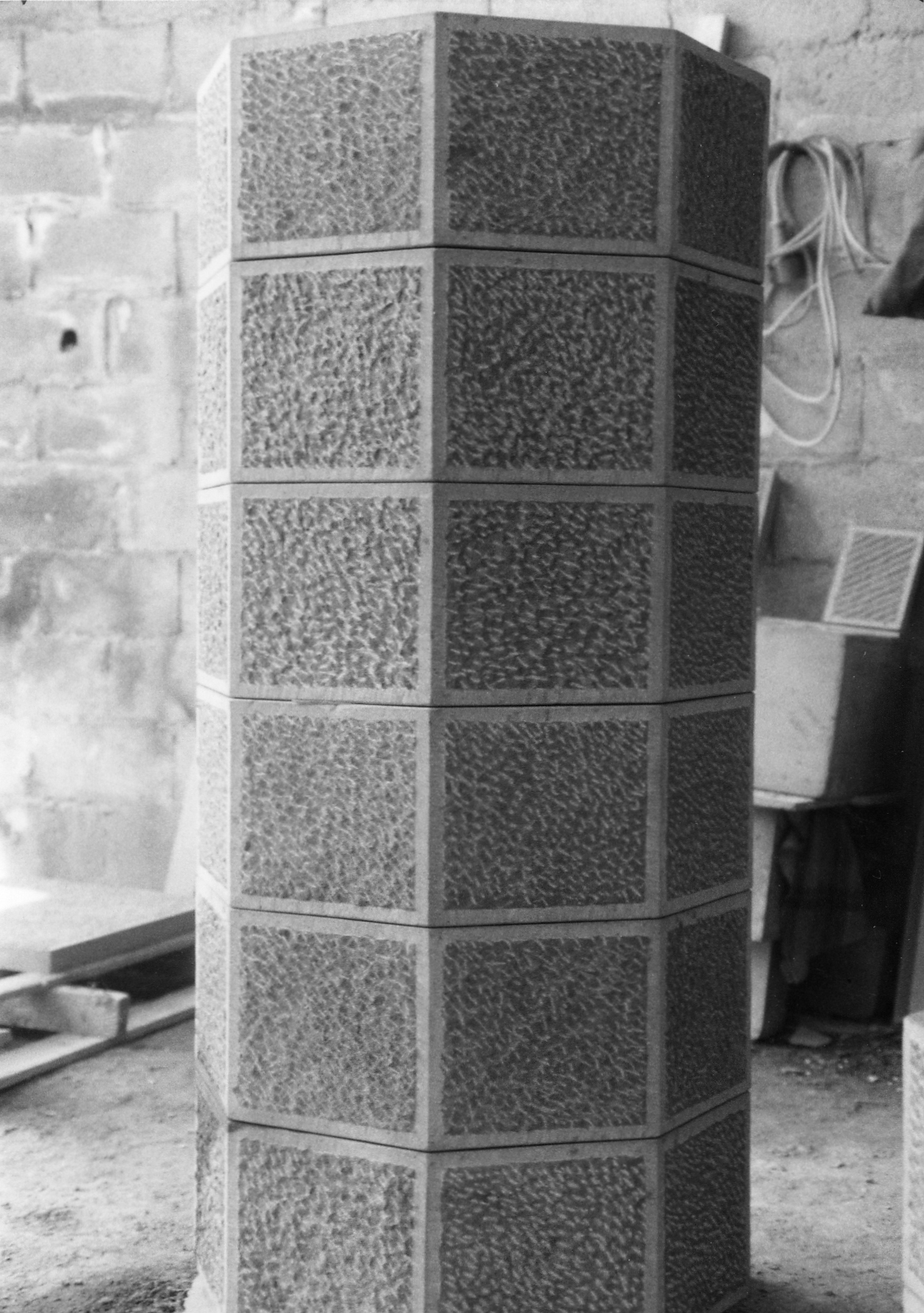
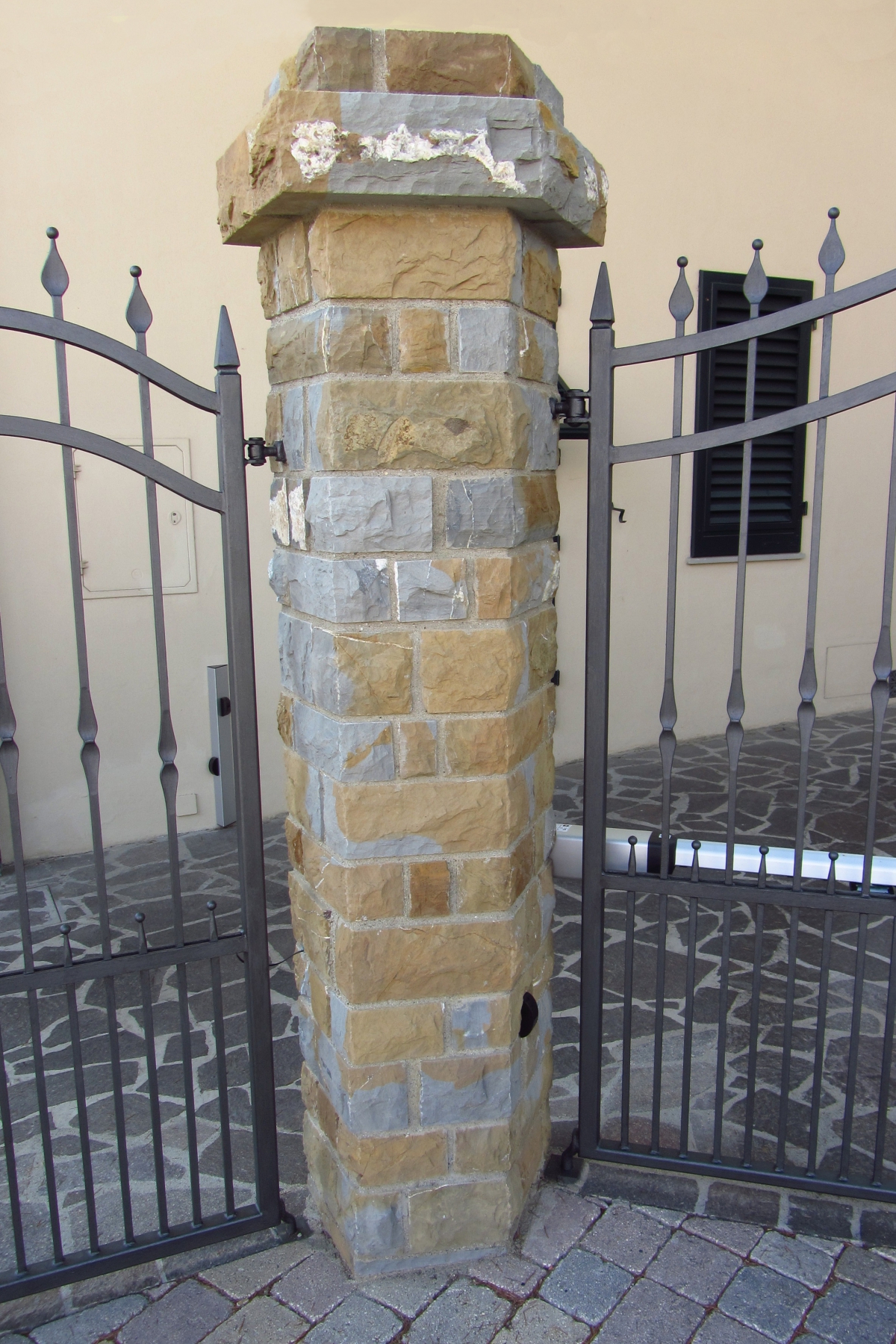
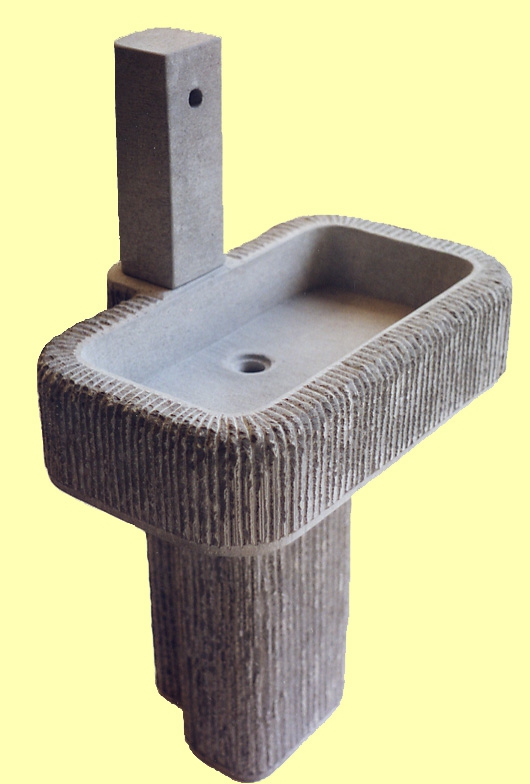
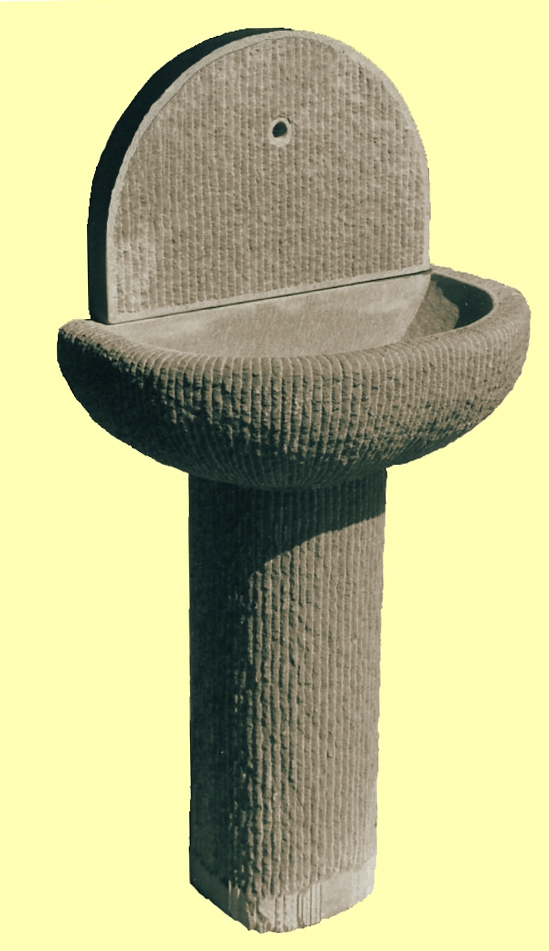
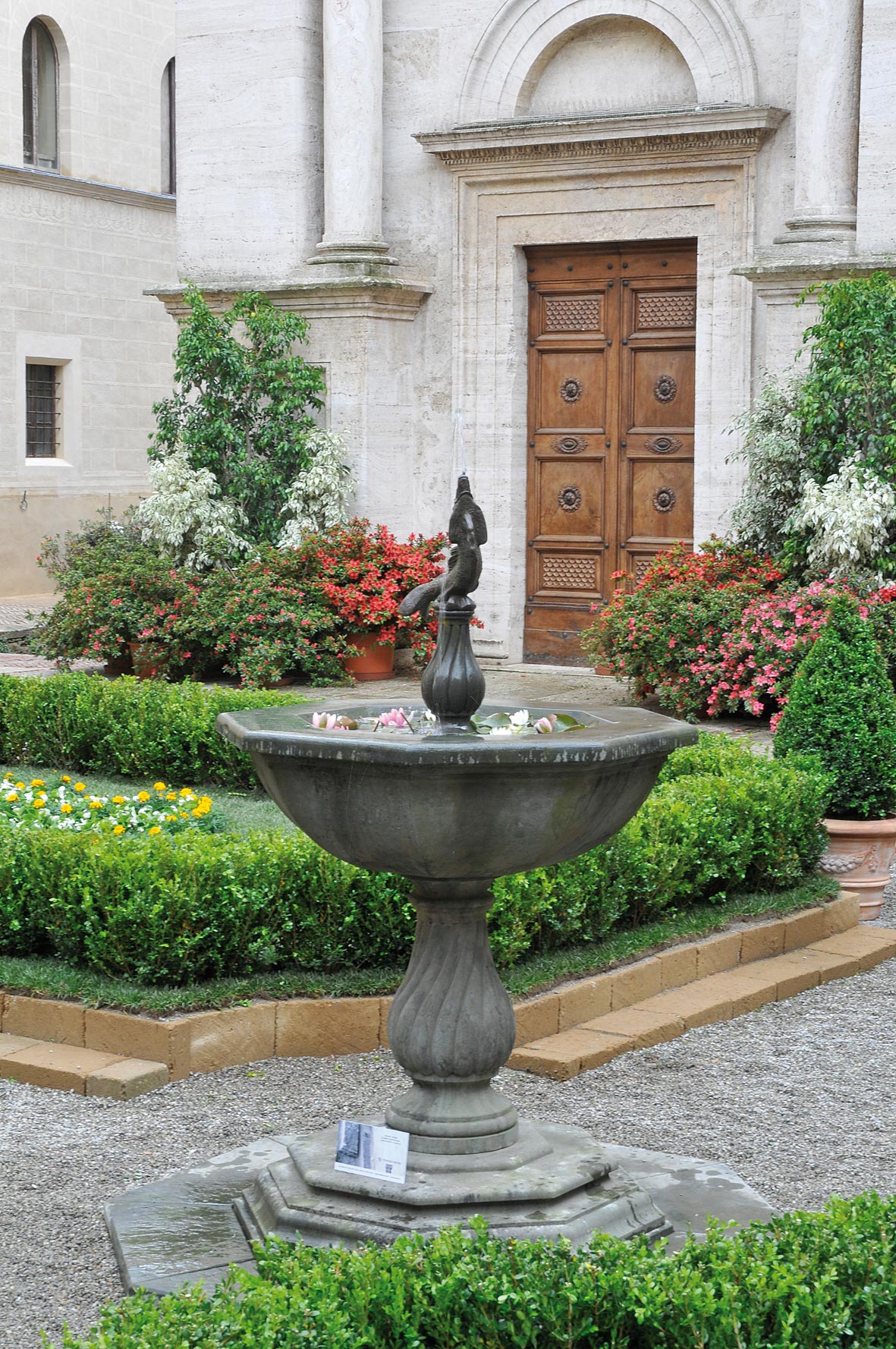
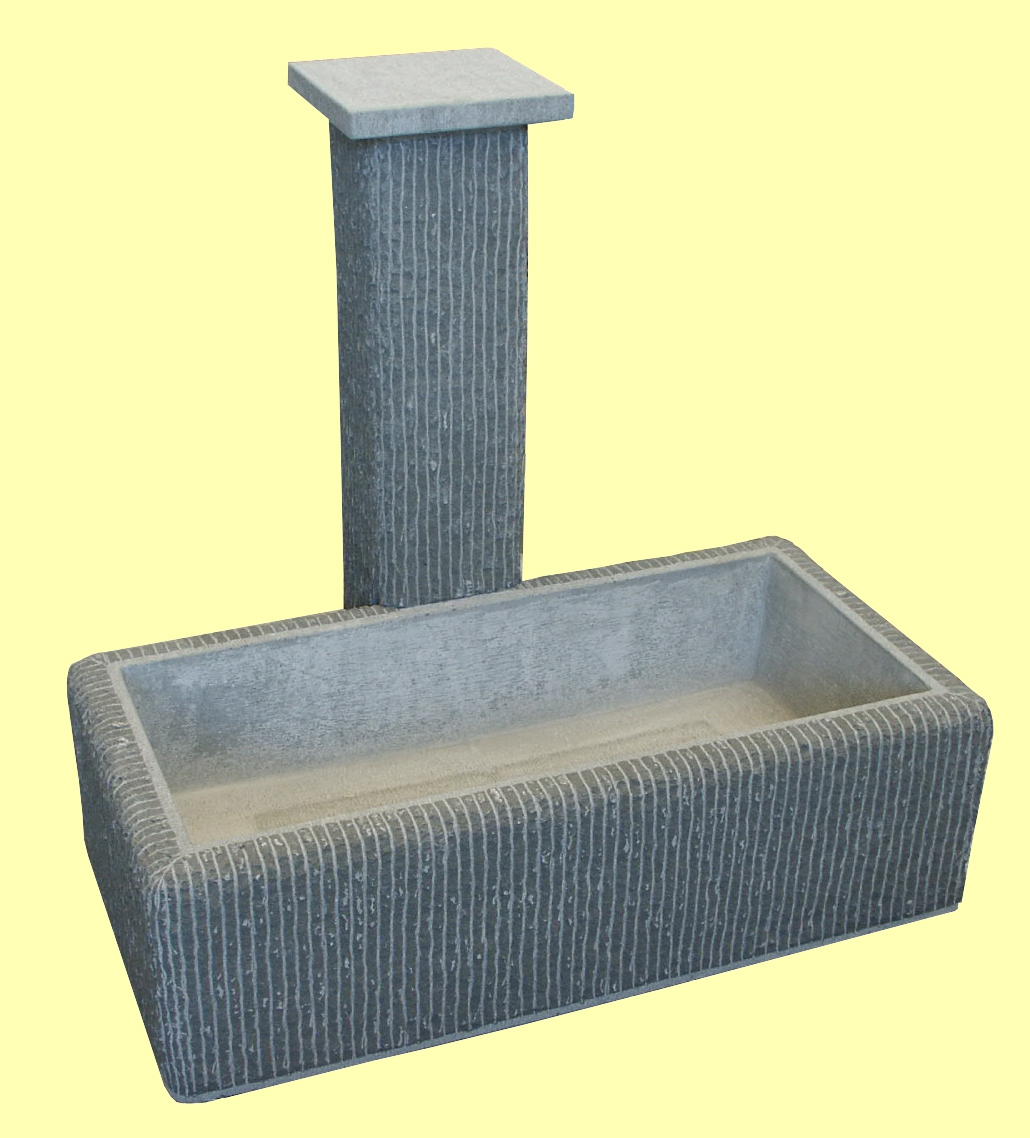
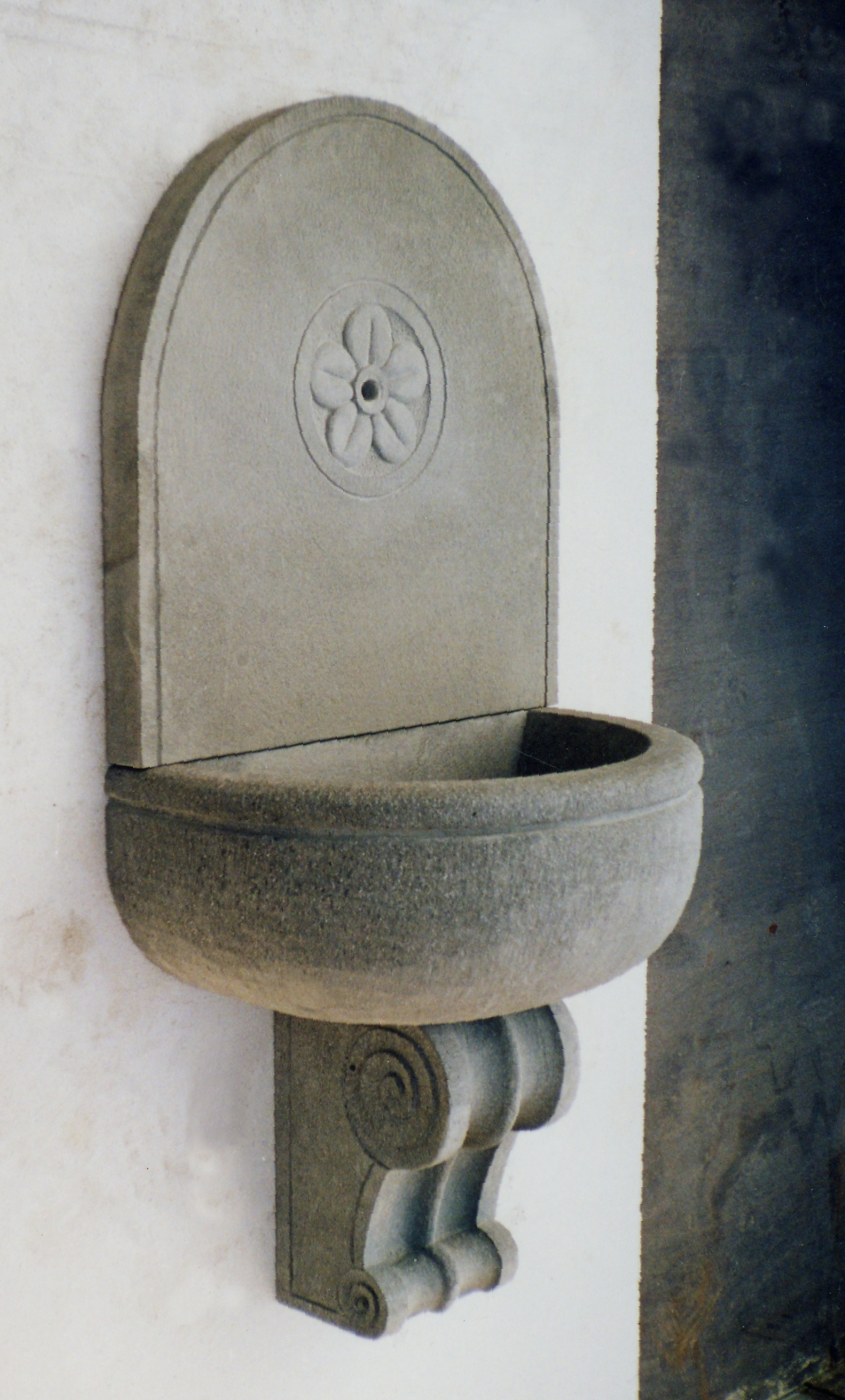
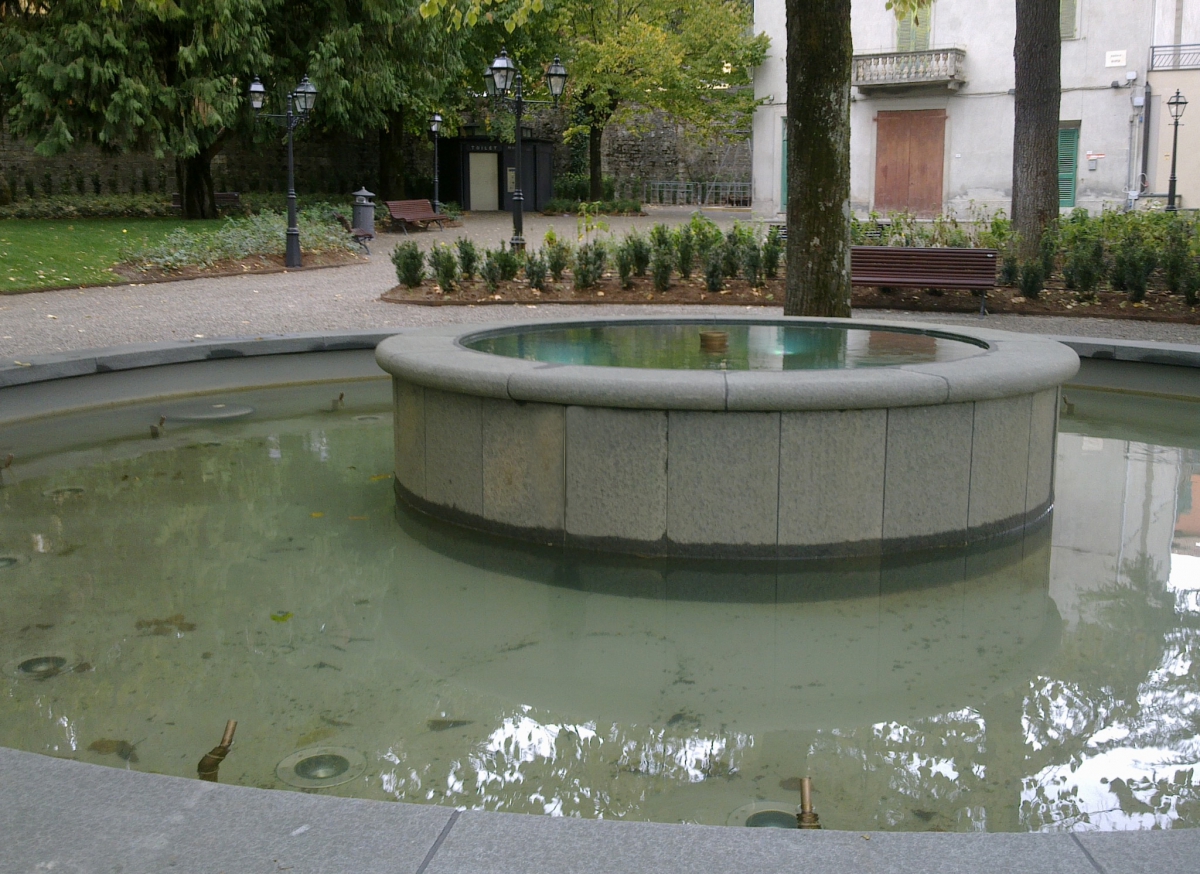
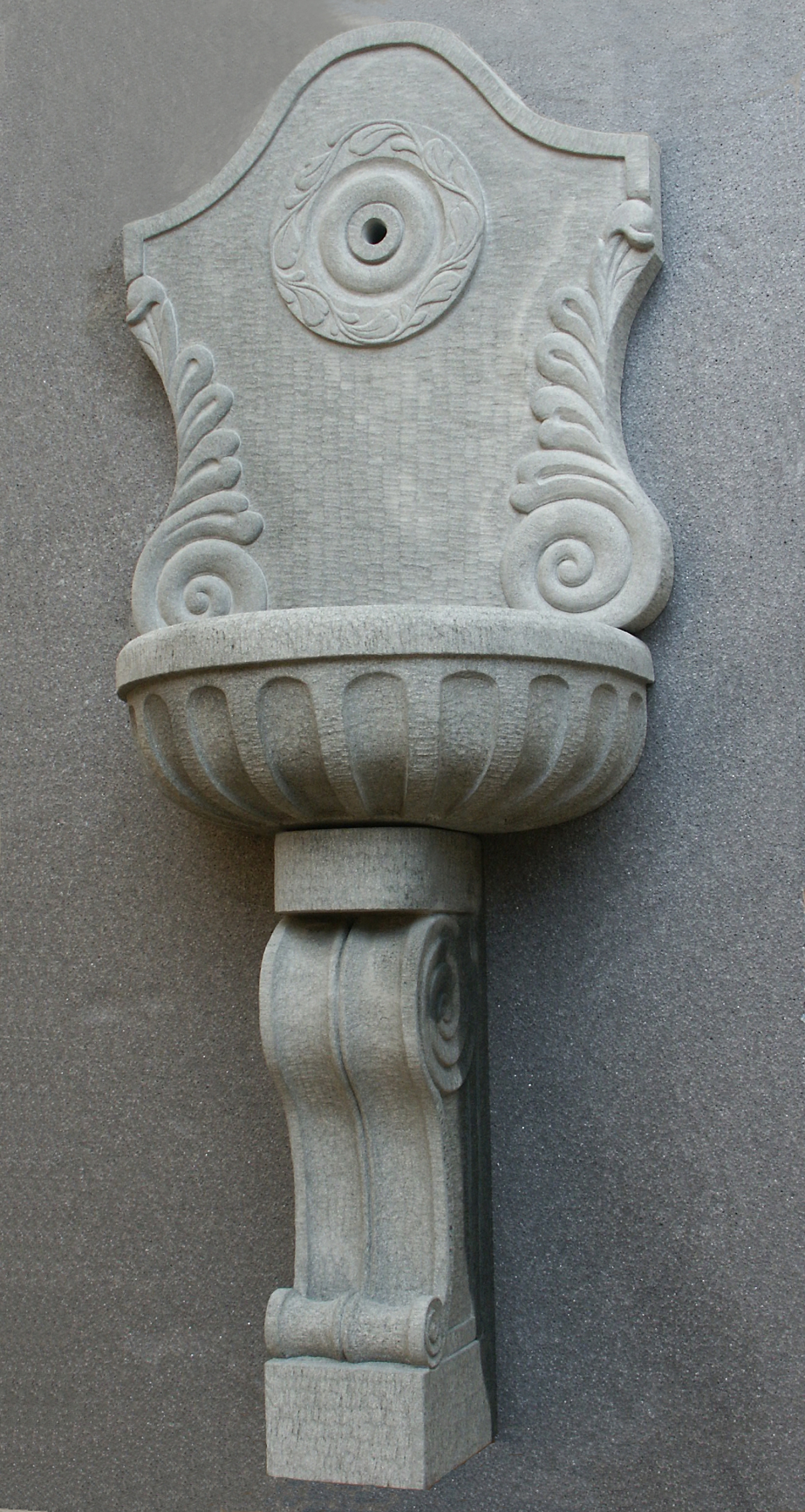
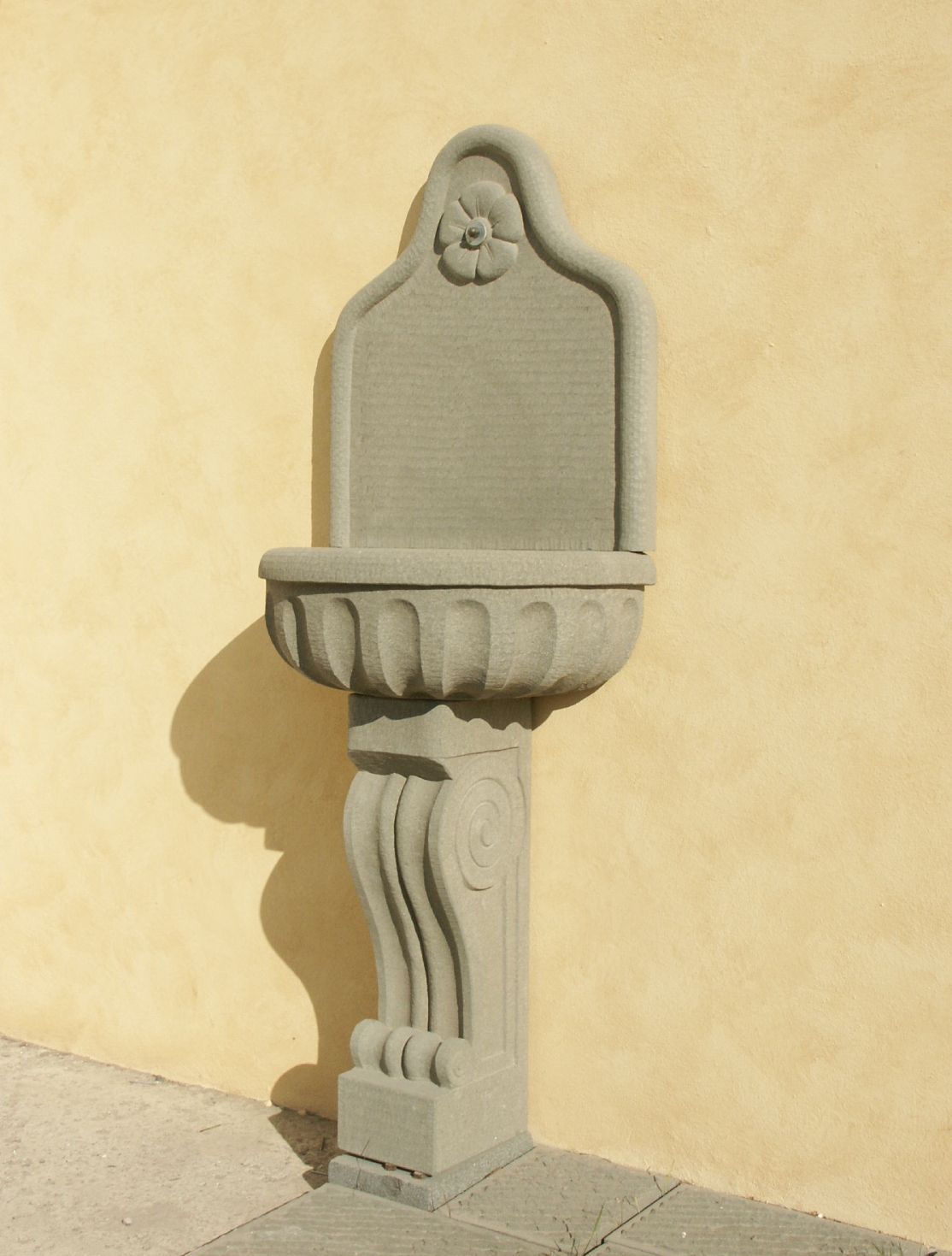
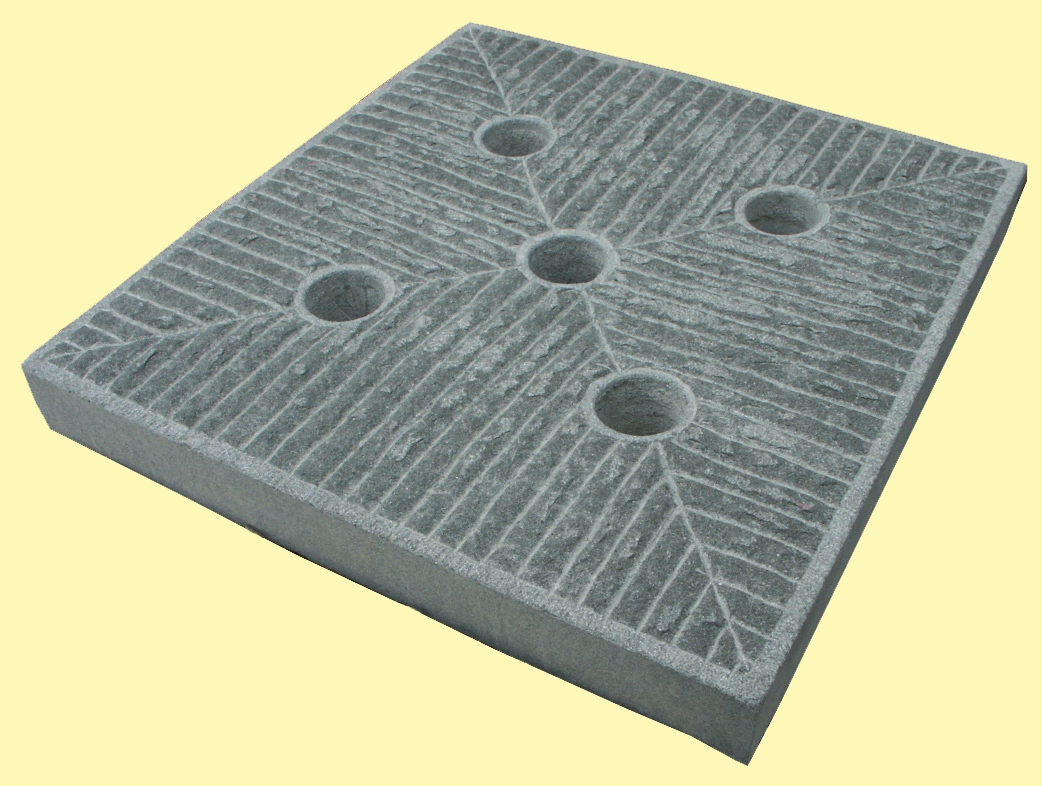
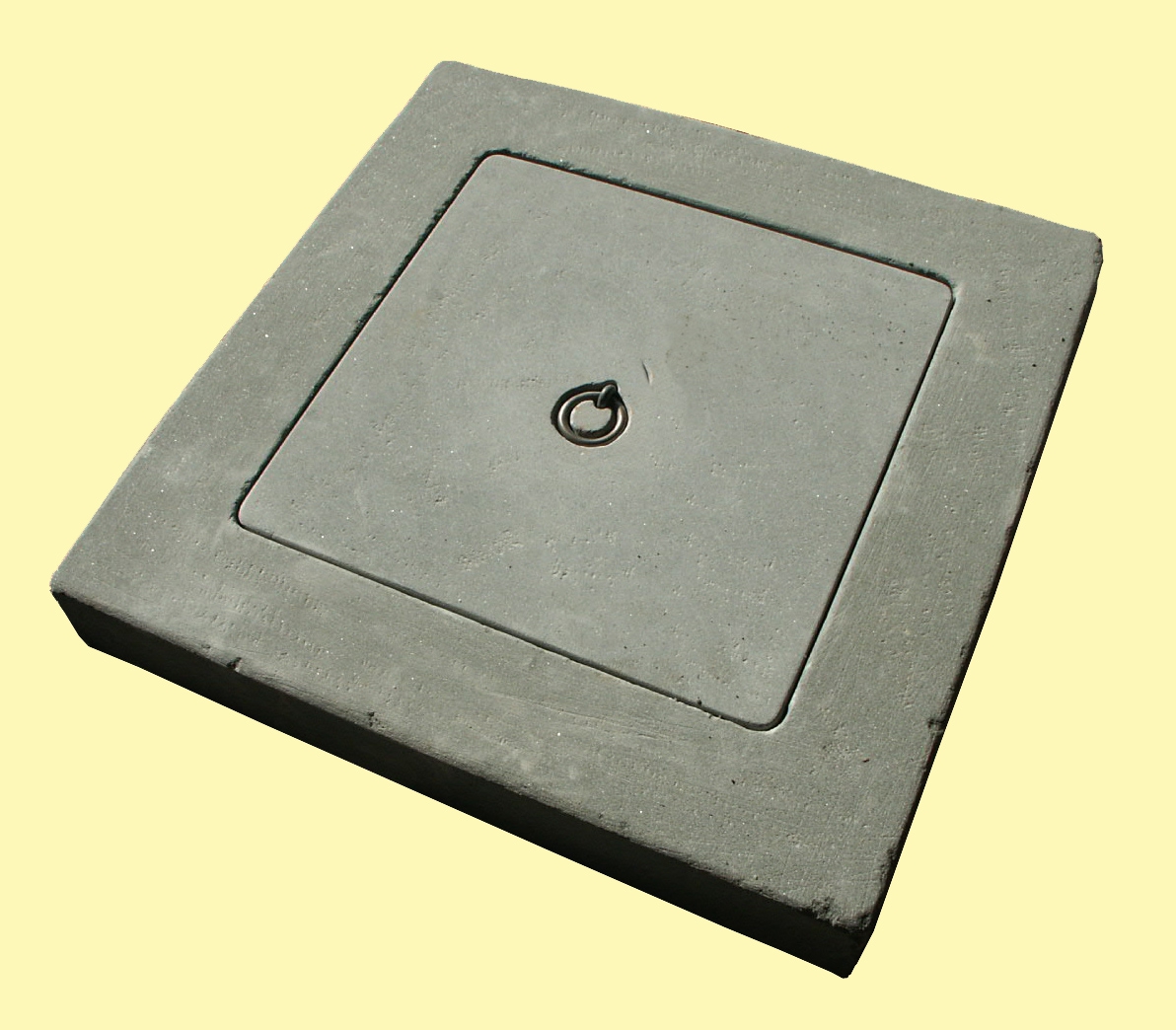
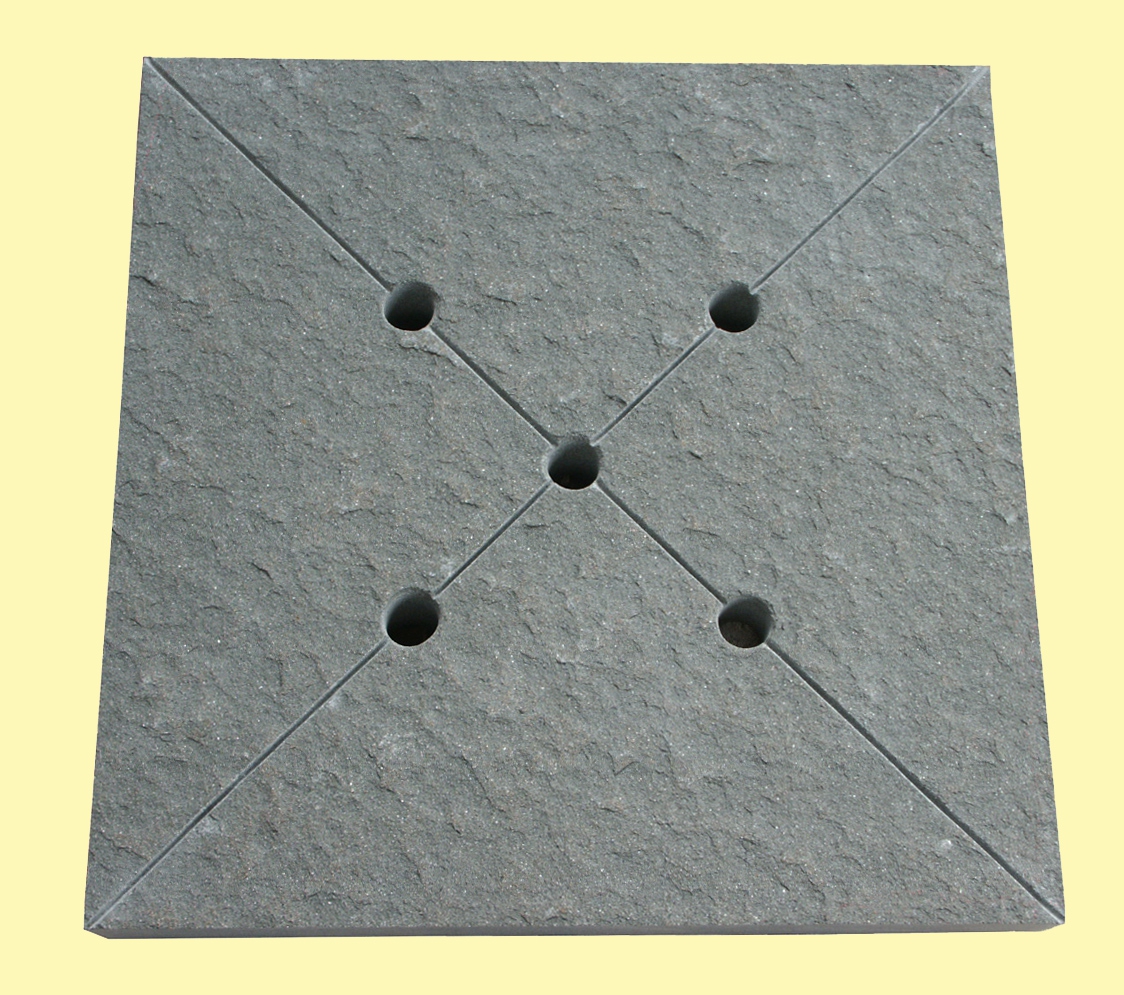

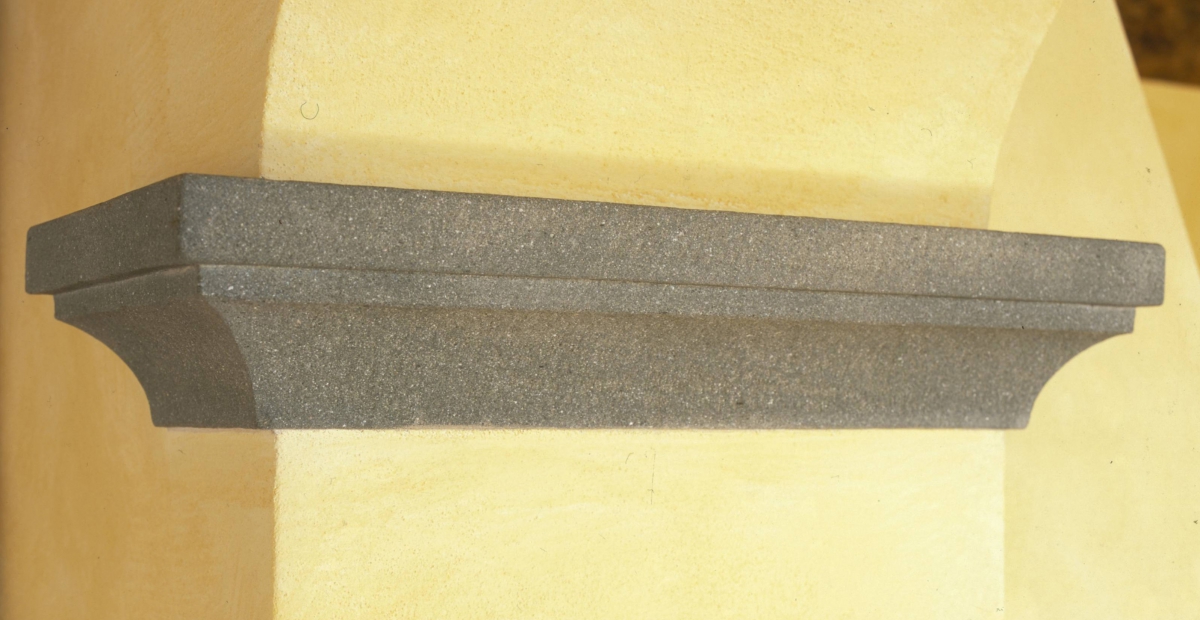
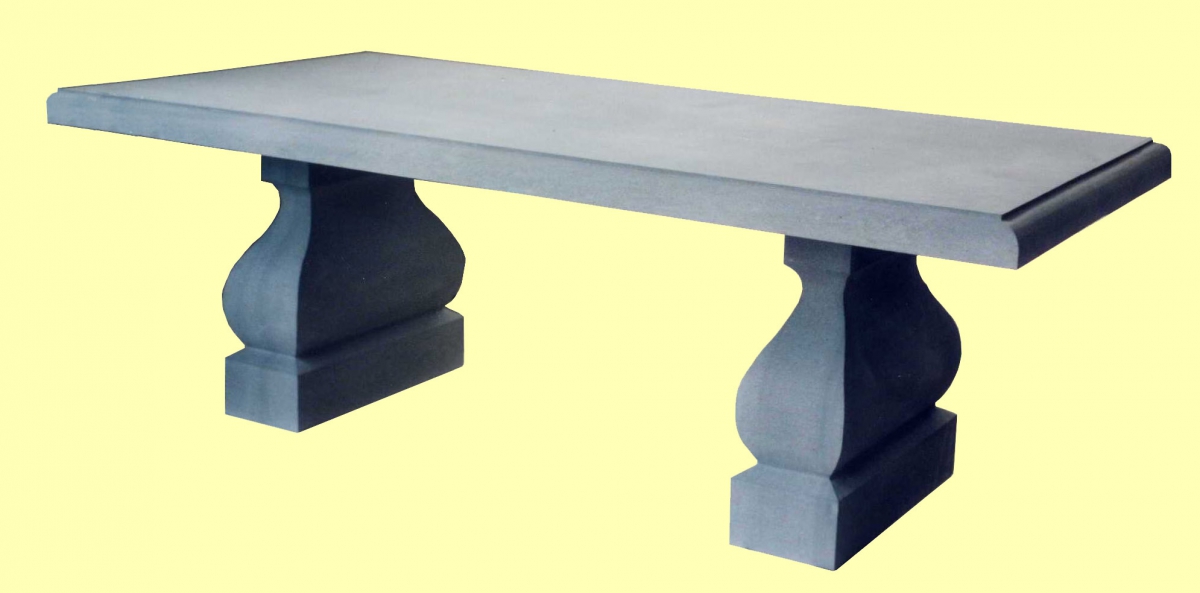
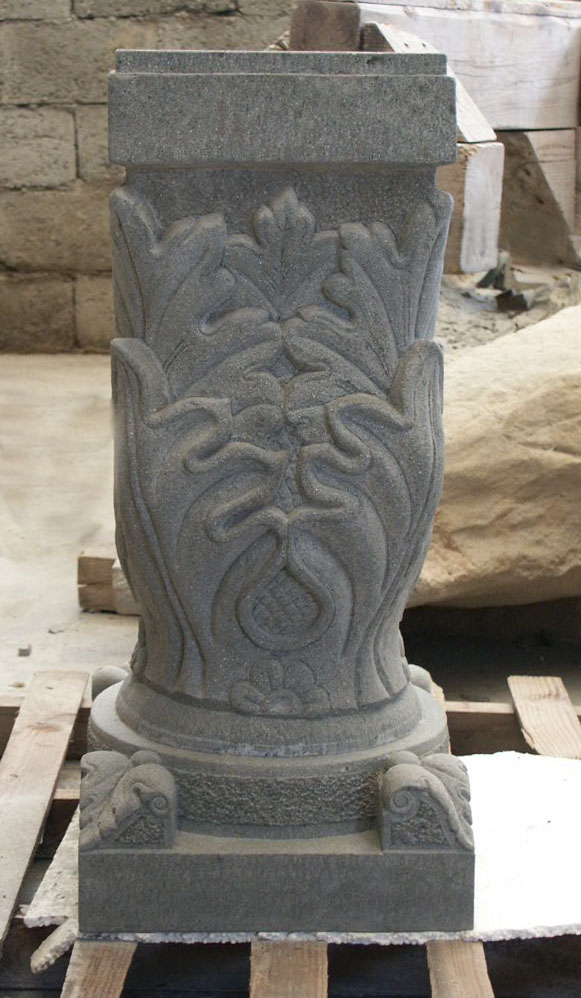
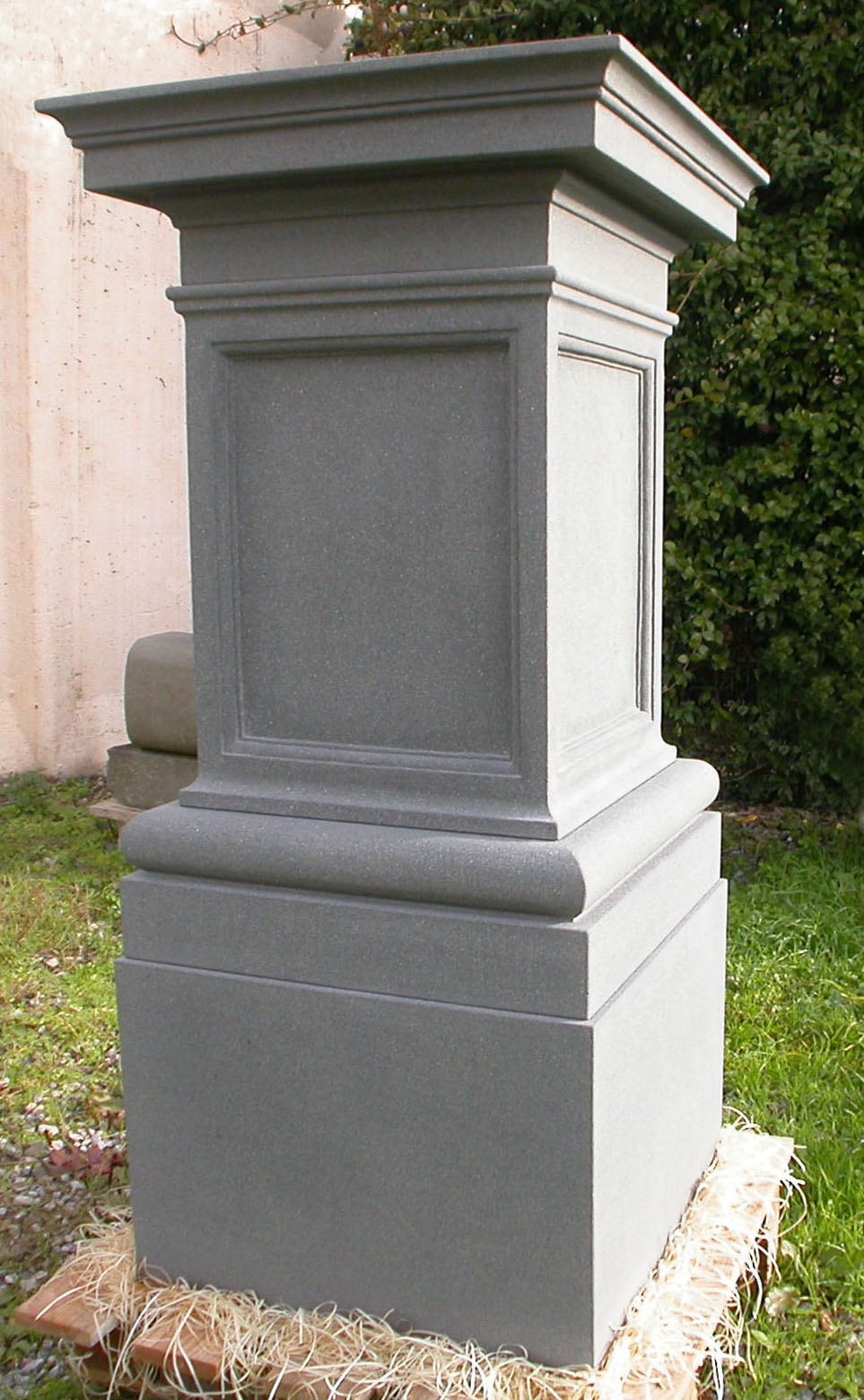
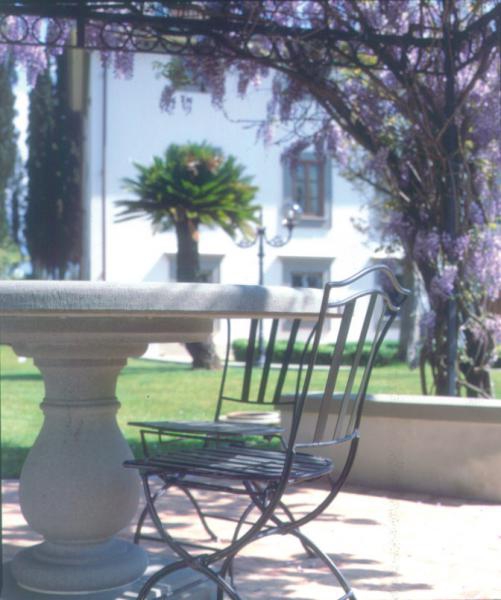
Floorings for external use, so called pavings in road environments, can be realized in a variety of natural stones and can have regular or irregular size. The standard regular size is rectangular, 30 to 40 cm wide with a variable length, usually between 50 to 80 cm. These dimensions are the most suitable to reduce the waste of raw material.
The irregular size, called “opera incerta” (undefined work), includes slabs of various shapes, all with a diagonal measure around 25-30 cm. The thickness depends on the intended use (vehicular or pedestrian), and on the specifications of the chosen material. The finishings to be preferred are piano naturale (natural surface), fiammata (flamed), bocciardata (bush-hammered), martellinata (hammered), subbiata, fiammata and anticata (flamed and aged).
The structure supporting the stairs in most of the current building works is made of reinforced concrete coated with different types of natural stones. Less slippery finishings are preferred for outside stairs like aged, hammered, flamed and aged, combined to “a coste quadre”, “a toro” or “a becco di civetta”. In case of particularly hard outdoor conditions or garden furniture, irregular slabs can be used to compose large steps. The best finishings for inside stairs are polished, flex, and brushed. At Frosini Pietre solid steps can be performed, as if done with the same construction techniques of the early 20th century, combining these techniques with traditional and modern finishings.
Kitchen counter tops can be built with different materials, each with its own characteristics and with different aesthetic and functional results.
Creating a counter top made of stone or marble is to choose a natural element that will characterize the environment substantially thanks to the unique characteristics of the stone’s grain, the colors present in it and the finishings. A careful work of survey and design that Frosini Pietre performs, will overcome any problem of corners out of square with elements of any shape, but also to create sinks totally carved into the stone, creating the slots needed for the stove, and then complete and enrich the environment of the kitchen with wall coverings of the same material.
Fireplaces can be classified according to their sizes or to their style (that is, with particular artistic and architectural features and handmade decorations made by expert stonemasons).
Typically, they have a base that delimits the flat surface of the fire and creates the lower frame, the two posts in support of the structure, a folder at the closing of the "mouth" and a frame that is normally shaped and decorated. All of these elements is the hearth,key place where fire is turned on. Hearths may be of different types: not protruding from the wall, protruding or open on four sides. The chimneys can be made in different materials, but in all cases must comply with the ratio between the width, height and depth of the "mouth" of the fire.
Frosini Pietre has expanded its portfolio of projects, supporting the study and redesign of its chimneys, the knowledge of natural materials and their endless possibilities, in order to create customized objects.
The cymatium moldings are covering elements of a wall, a balustrade, or a pillar. Possible variables are given in function of the material chosen, the type of finishing, the thickness, and the shape that you want to give to the section of the cymatium; from the simplest as the “costa quadra”, “a becco di civetta” or “a toro” to the most complex and articulated molding made of a succession of fillet lists, cyma and ovolo. The “baulata” section is very popular. The upper most part of this molding is slightly concave. The moldings can be equipped with drip trays. These are channels carved in the lower level of the
molding in order to collect the rain water from the walls.
The finishings to be preferred are: levigata (polished), spazzolata (brushed), flex, aged, hammered, flamed and aged, and chiseled.
It is really important to choose the natural material for the pool copings in function of the pool’s water and its treatment. Then, follow the aesthetic aspects related to color, finishings and the appropriate sections.
The finishings should guarantee an adequate degree of slipping. The best are flex, aged, hammered, flamed and aging, and chiselled.
The natural stone cladding is a large approach to a load bearing masonry and can be made of stones or plates.
The stones, with a thickness ranging from 10 to 15 cm, can be made either "filaretto", thus with a shape of a rectangular bar that compose a masonry in regular rows, or with an irregular shape in the so called "human head" size.
The plates follow a new trend, that is, produce the same stone masonry with a lower thickness, 3 to 5 cm.
Both stones and plates can be produced with different types of stones, suitable to different formats. Special pieces are also available, like those that are used to complete the coverings and give the wall more authenticity.
Possible finishings are natural surface, cut, aged, cut and aged.
In case of retaining walls totally built in stone, Frosini Pietre selects large stones that can also be used as garden ornaments.
The coats of arms, intended as a symbolic aristocratic sign, have some features such as the shield, the symbol, the presence of weapons or distinctive tools. Widely used in the Florentine milieu, the coat of arms with the symbol of the “flowered lily" which has the distinction of being designed by five upper petals and some lower branches, all arranged in a symmetrical manner. Street numbers and letters are chiseled on stone plates, characterizing and embellishing any space with simple elegance.
Natural stone frames that distinguish the perimeters of doors and windows of many historical buildings are composed of bases, posts, lintels, adorned with moldings of varying size and importance. In the case of arched frames, other elements such as capitals, curved cornices and keystones are also present; shelves, decorations with stamps and ovolos, and coats of arms may be present in support of the frames. The possible finishings are brushed, flex, hammered, embossed, embossed and subbiata, chiselled.
Window sills are horizontal elements at the base of a window. What makes them more elaborate is the processing of the “costa” seen as the “costa quadra”, “becco di civetta”, “a toro” or modelled.
Other technical elements are eventually the jambs of the shutters, the dripstone - open or closed, and the inside counter-sill.
Window sills made of Pietra Macigno di Greve have different finishings such as polished, brushed, flex, and hammered.
A shelf is a horizontal element that protrudes in relation to a vertical surface, and its function is to support vertical loads like roof beams and balconies. Generally, the size of a shelf is proportional to the elements that it should support. Made with many natural stones, it can have a strong artistic connotation as it can be enriched with hand-made decorations done by expert stonemasons.
Pillars are vertical elements made of ashlars of Pietraforte and Pietra Macigno of Greve in Chianti. They have a square, rectangular or polygonal shape. Pillars are often found in arcades, supporting
the floor, or as elements that characterize the main entrance of country residences. The machined ashlars with finishings such as bugnatura (embossing), processing “alla punta”, tranciatura (cutting), and flaming, can have regular form and be squared to give them a more urban look, or an irregular form for a country one. Currently in constructions pillars are made with a steel core and then stone clad. Frosini Pietre designs and manufactures the individual segments, numbering them for an easy mounting in a workmanlike manner.
Over the centuries, fountains used in gardens and public places have always had architectural and decorative value.
There are many solutions built with Pietra Macigno di Greve. From wall fountains made up of front piece, solid tank, and base, to the circular fountains that represent the barycentre of the Italian gardens. Both can be enriched with precious decorations, and it is possible to make them in shapes and sizes appropriate for the settings they will be placed in.
Drains, manhole covers, but also zanella stones and tombstones are special elements of the outside floorings made of many kinds of natural stones. Their function is to channel and remove the wastewater from paved surfaces. The manhole and the most simple tombstones generally have a square shape with the possibility of having a central removable element . The zanella stone can simply be flat or have a concave section for a better operation. The thickness of these elements is related to the intended use: pedestrian or vehicular.
The kerbs circumscribe a sidewalk, flooring, flower bed and the front of a grand staircase.They can be made with different natural stones and various sections according to customer's request; for example, the section “a becco di civetta” can be machined in the front part, rounded and finished with various techniques such as sanding, hammering or flaming. The dimensions of the kerbs vary and provide special pieces, often curved.
The column is a vertical architectural load-bearing element with circular cross-section, and generally, composed of a base, shaft and capital. From a stylistic point of view, according to the characteristics of its elements, the column can belong to a particular architectural order: Tuscan, Doric, Ionic, Corinthian, and Composite.
Many are the architectural examples in which there are columns, always with the finality of embellishing and giving monumentality to the interventions.
Columns can be made with different kind of natural stones. The choice may be conditioned by the color variations that are desired, but also by the size and processing.
Today it is still possible to create unique hand-made objects by expert stonemasons.
Tables in natural stone can be round or rectangular. Round ones are usually composed of a central pedestal machined from a single block, on which rests a flat top, generally with a thickness of 6 cm and maximum diameter around 1 m. The rectangular ones have two bases surmounted by a slab. The combination of stone base with a glass or wooden top is widely used too.
The benches made of natural stone consist basically of two elements: the seat and the seat legs that hold the seat.
The seat, in its more traditional appearance, is made of a single slab with thickness appropriate to its length and width. It has a rectangular shape with the edges machined and enriched by different shapes.
The seat legs, if they are based on the ground, are called "legs", or else, they can be shelves anchored to the wall. According to the importance of the bench, the legs can be simple or richly decorated.
Typical finishings of the benches are polished, brushed, flex, hammered, aged, flamed and aged, and chiseled
Tel. +39 055 8724105/6
Fax. +39 055 8728013
Andrea Frosini
+39 335 7573161
andreafrosini@frosinipietre.it
Arch. Petra Esposito
+39 380 7981769
petraesposito@frosinipietre.it
Geom. Marco Buccioni
+39 366 9029606
marcobuccioni@frosinipietre.it